-
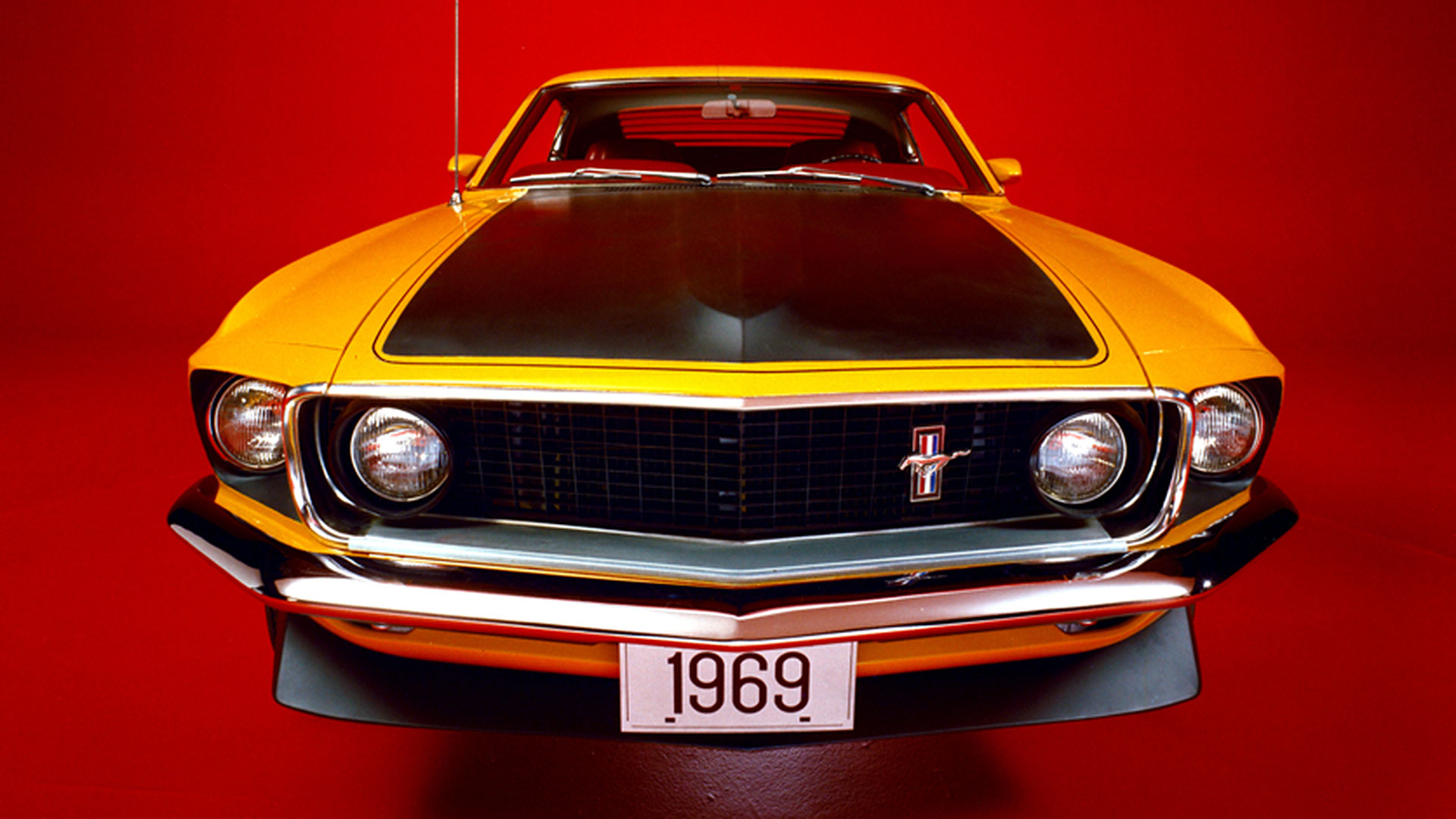
Still no replacement for displacement
© FordThe world may be on a move to downsizing and electrification, but enthusiasts will always be drawn to the idea of fitting a car with the biggest possible engine seems to have been lost.
Despite the trend for smaller powertrains, Chevrolet last year bucked the trend with a gigantic new crate motor. The massive big-block ZZ632/1000 V-8 has inspired us to investigate what cars it beats on displacement.
We have limited our search to cars produced after WW2, and there is nothing here fitted with an engine smaller than 6.0-liters.
-
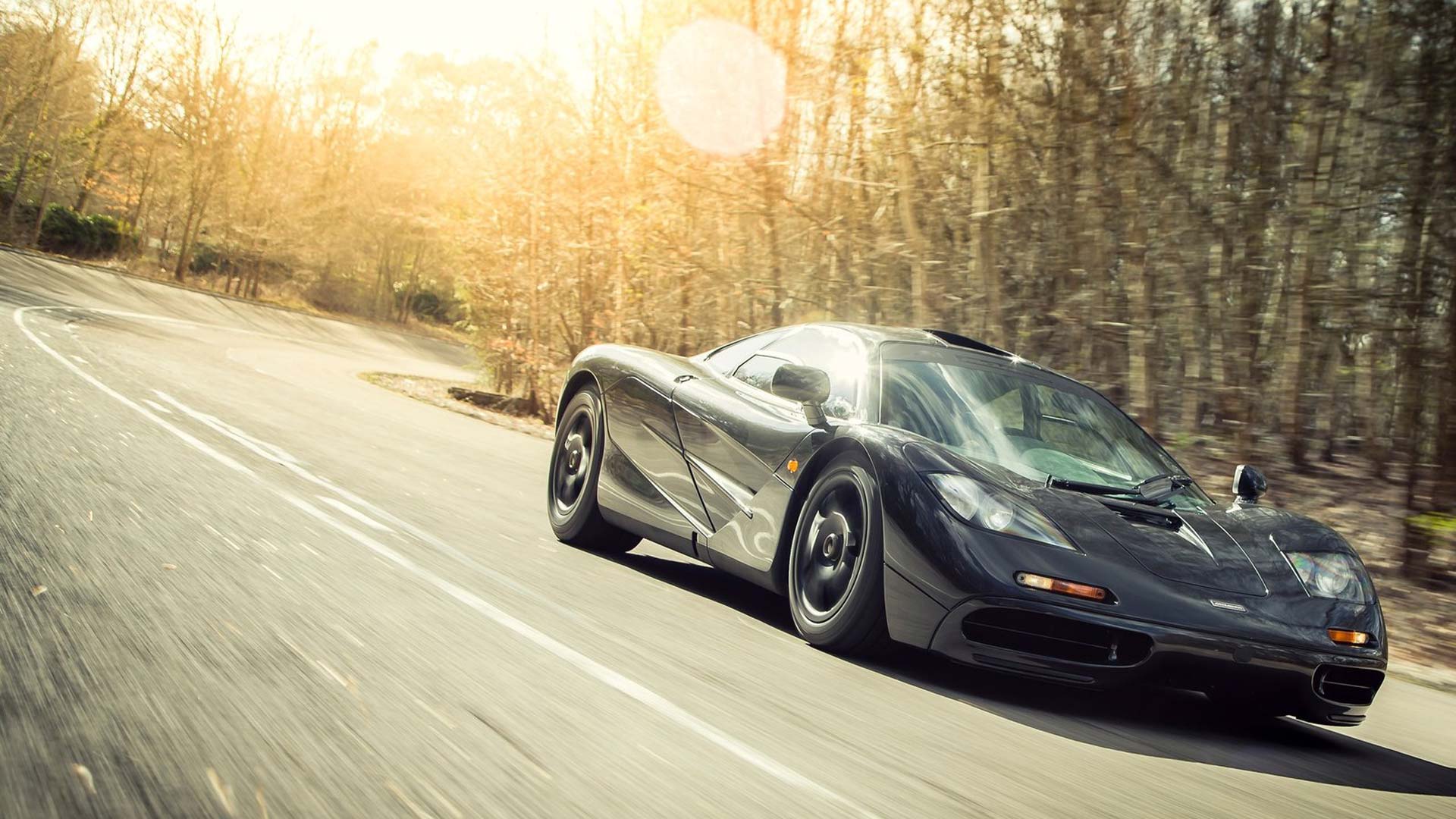
1993 McLaren F1 – 6.1-liter V12
© McLarenThere are not many lists where a McLaren F1 is found at the bottom. But, when it comes to displacement, the Big Mac is not top of the pile. That’s not to say the BMW S70/2 engine is not impressive, even if those being unkind might call it two BMW M3 six-cylinder engines bolted together.
Yet 627 hp is clearly nothing to be sniffed at. It was more than enough to make the F1 the fastest production car in the world, with a top speed of 240 mph. It also had an engine bay lined with gold, which automatically makes it rather cool.
-
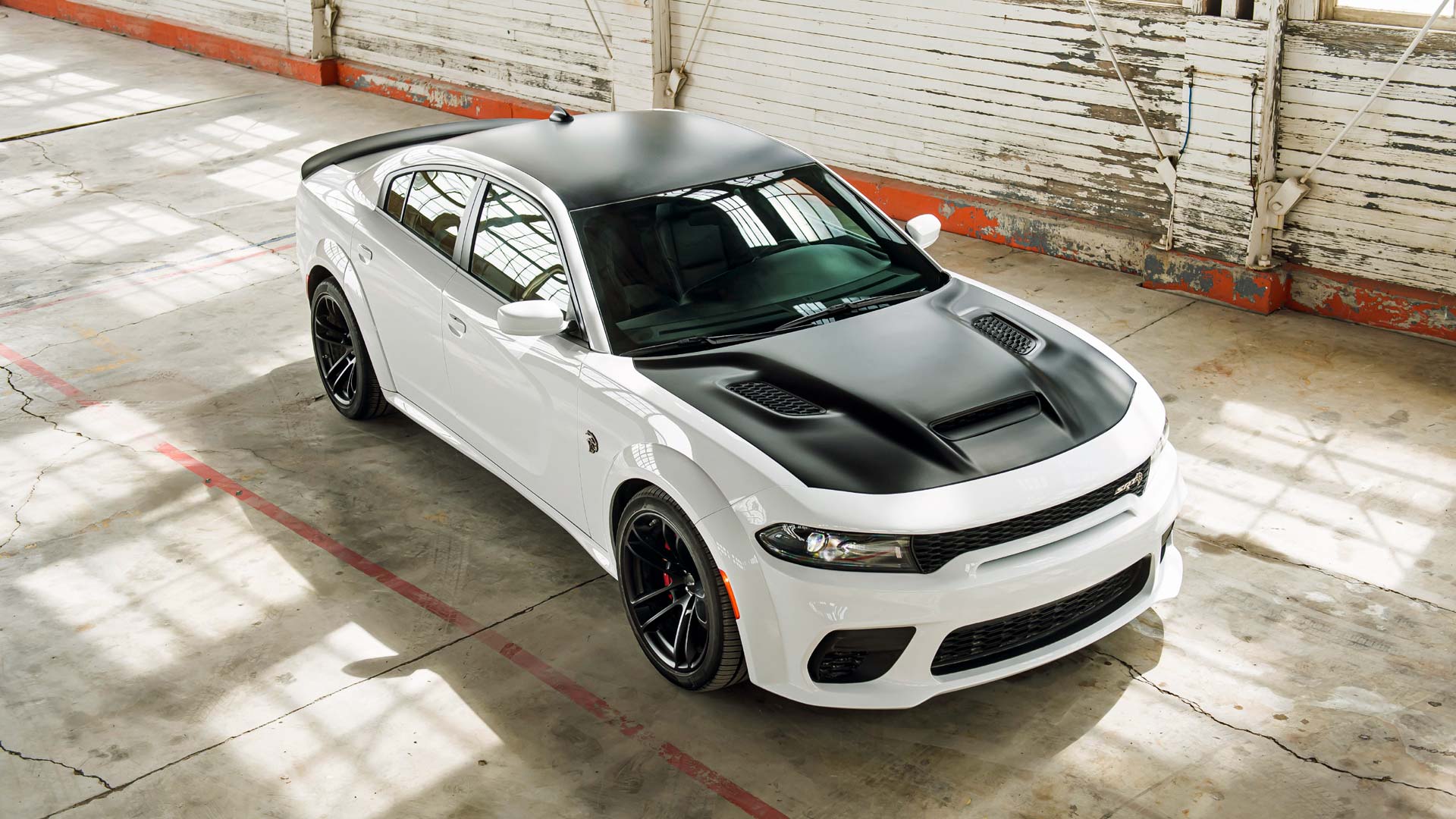
2021 Dodge Charger Hellcat – 6.2-l Hemi V8
© DodgeThe Hemi name is derived from the hemispherical cylinder head design, which Chrysler first started using in 1951. It appears many times on our list, with the muscle car battles of the 1960s and ‘70s responsible for some of the biggest blocks.
Yet the Hemi is still alive and in rude health today, with a modern 6.2-liter V8 found in the Charger Hellcat. Here it is aided by a supercharger to deliver a whopping 797 hp in Redeye specification.
-
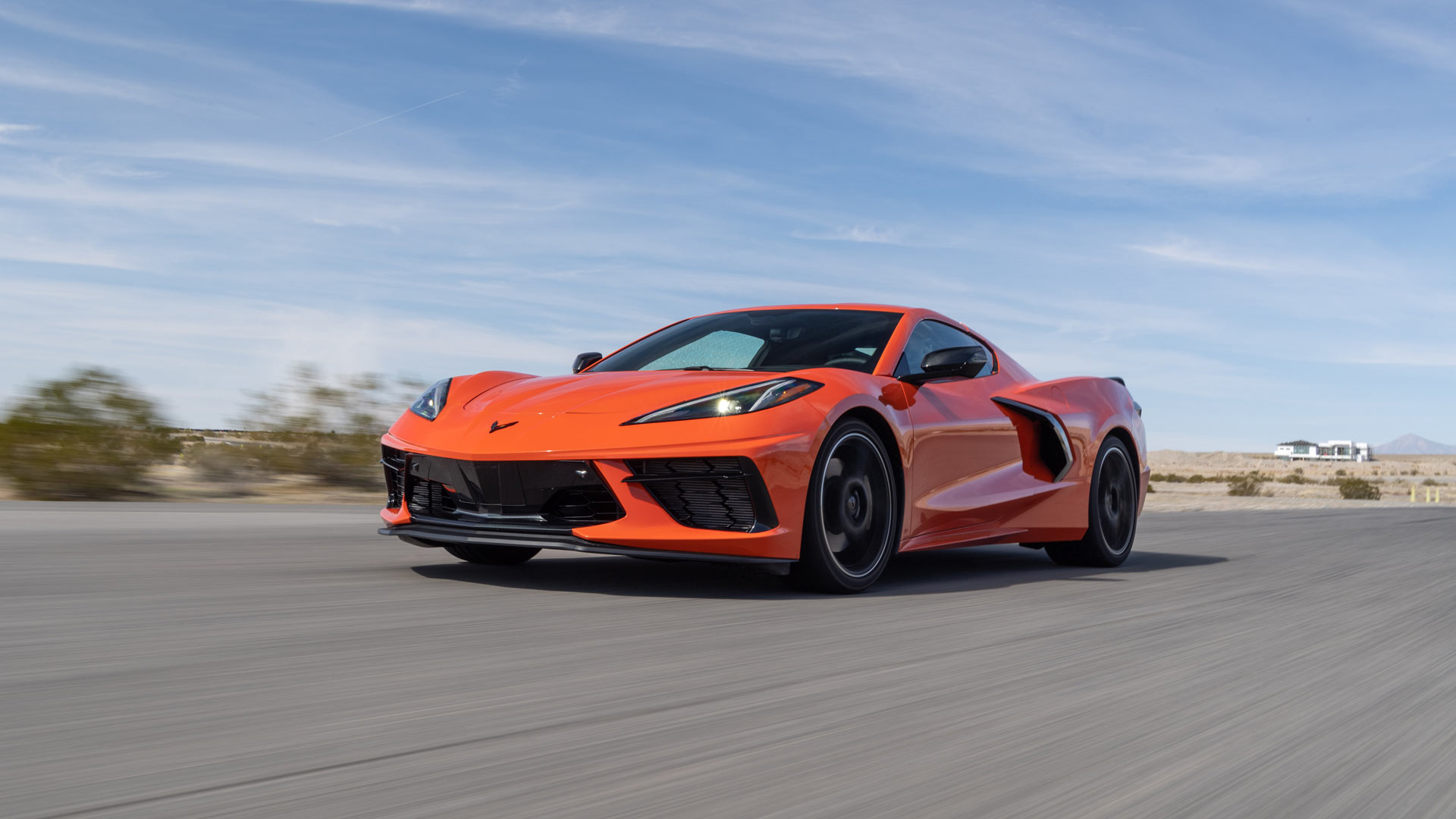
2020 Chevrolet C8 Corvette – 6.2-liter V8
© ChevroletOf all things that caused controversy about the new eighth-generation of Corvette, the size of its V8 engine was not one of them. The fact it is mounted in the middle of the all-new sports car is a major change, but the LT2 6.2-liter V8 is at least familiar.
A development of the engine found in the previous C7 Corvette, the new block has 490 hp as standard. Picking the optional Performance Package can push this to 495 hp instead.
-
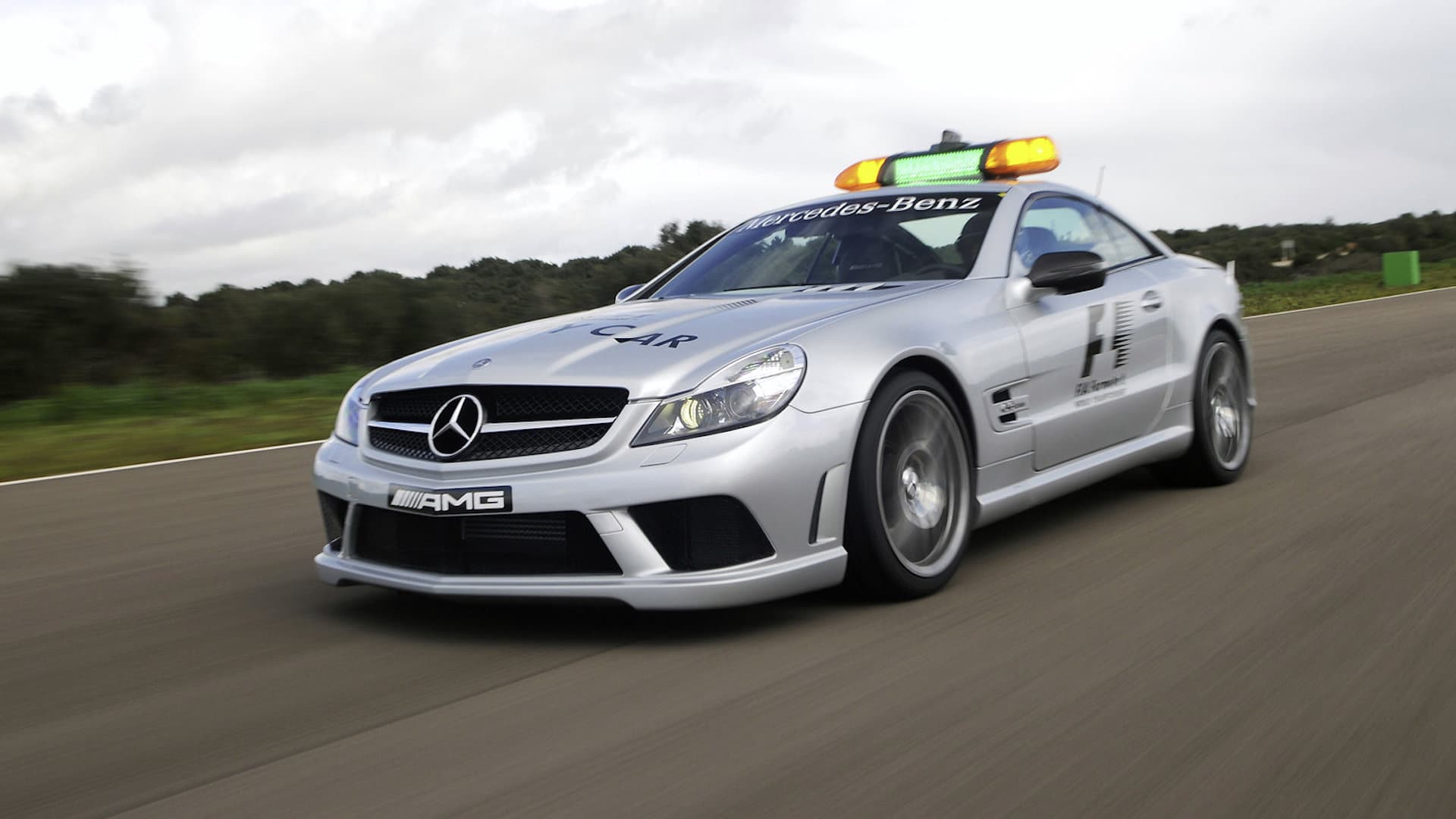
2009 Mercedes-Benz SL63 AMG - 6.3-l V-8
© Mercedes-BenzMercedes-Benz made frequent use of large-displacement engines in the late 2000s, fitting the 6.3-liter V-8 to multiple models. From the ML-Class SUV, to the S-Class four-door, virtually every Mercedes could be had with the big motor.
One of the most dramatic uses of the 6.3-liter engine was the 2009 SL63 AMG, used as the official safety car in Formula 1. Producing 525 hp, it allowed the SL63 to accelerate from 0-62 mph in 4.4 seconds, and stay ahead of a pack of F1 racers.
-
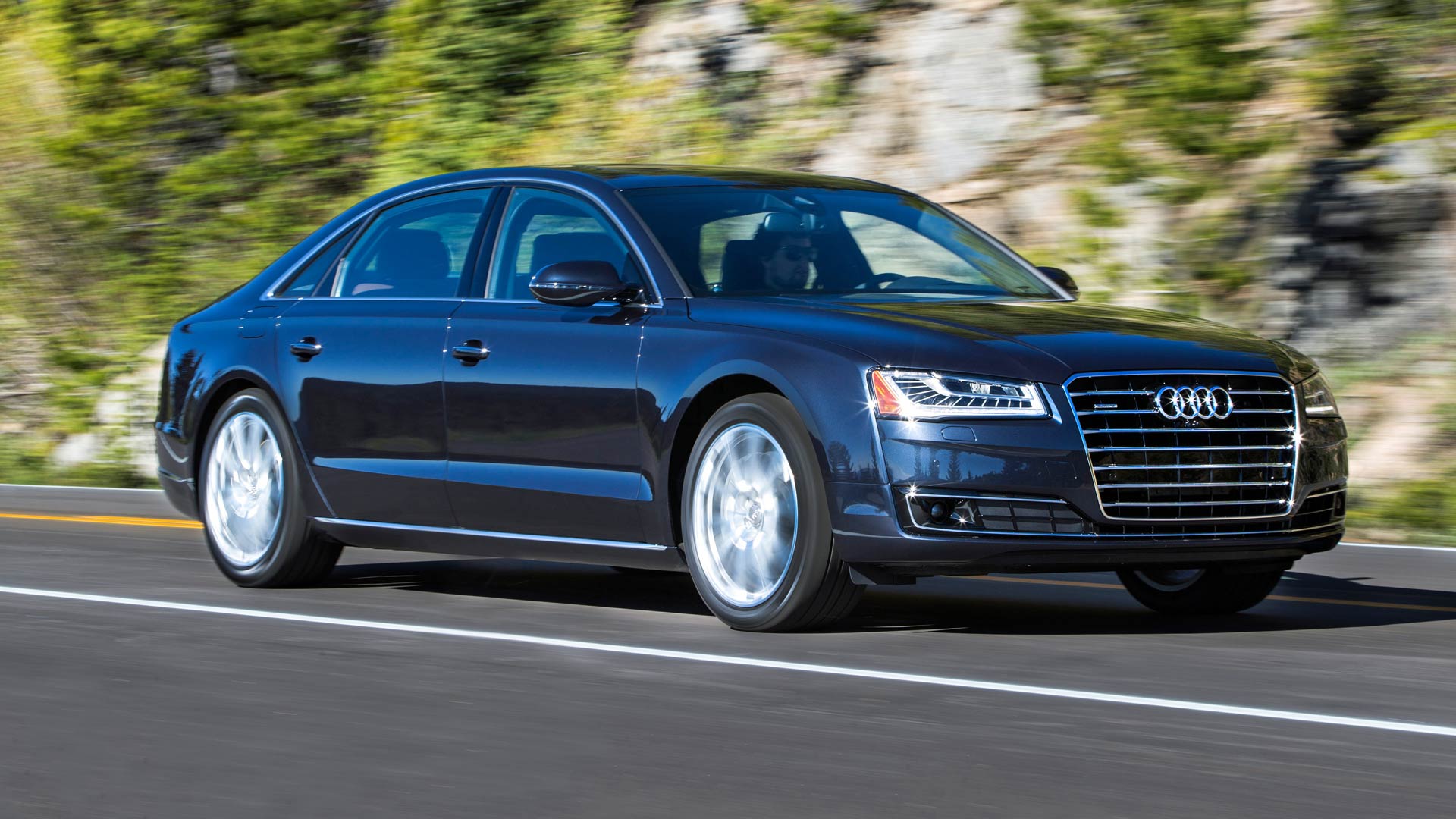
2012 Audi A8 L - 6.3-l W12
© AudiThe Audi A8 is possibly one of the most unassuming cars on this list, yet it packs a sizeable punch beneath the hood. Think of it as speaking softly, but carrying a large stick just in case. Only used in the third-generation of the executive saloon, this model could be fitted with a 6.3-liter W12 engine.
Available in the stretch long wheelbase version, this engine delivers a smooth 493 hp and 463 lb-ft of torque. It could be found in the armored ‘Security’ version of the A8 L, too
-
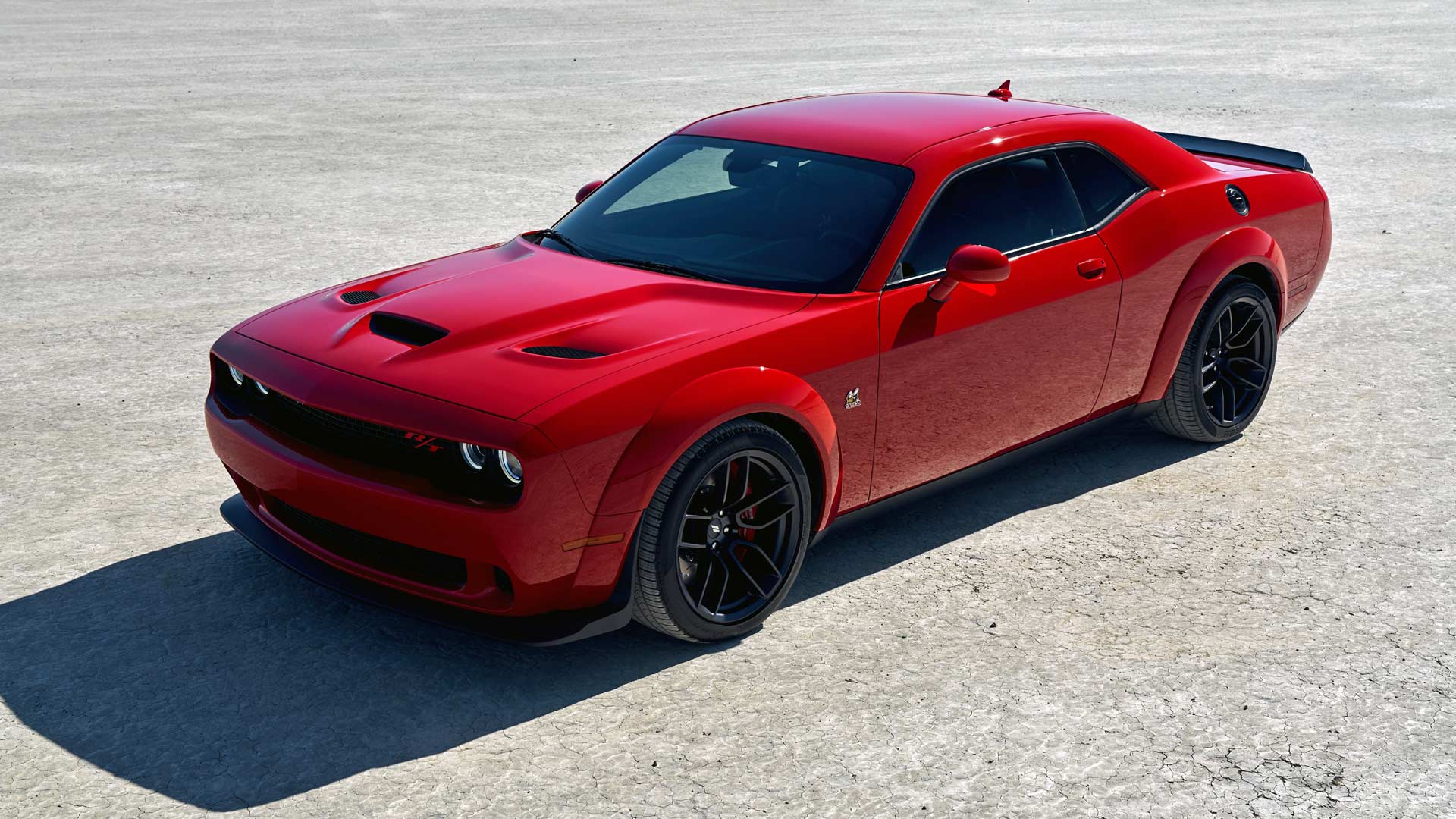
2020 Dodge Challenger RT Scat Pack – 6.4-l Hemi V8
© DodgeThe biggest modern Hemi engine can be found in a number of Mopar vehicles. That includes the Challenger RT Scat Pack as shown here, along with the Dodge Durango and Jeep Grand Cherokee.
Without a supercharger, it has to make do with the benefits of its 6.4-liter displacement alone. However, an output of 485 hp, along with 475 lb-ft of torque, proves there is still nothing wrong with natural aspiration.
-
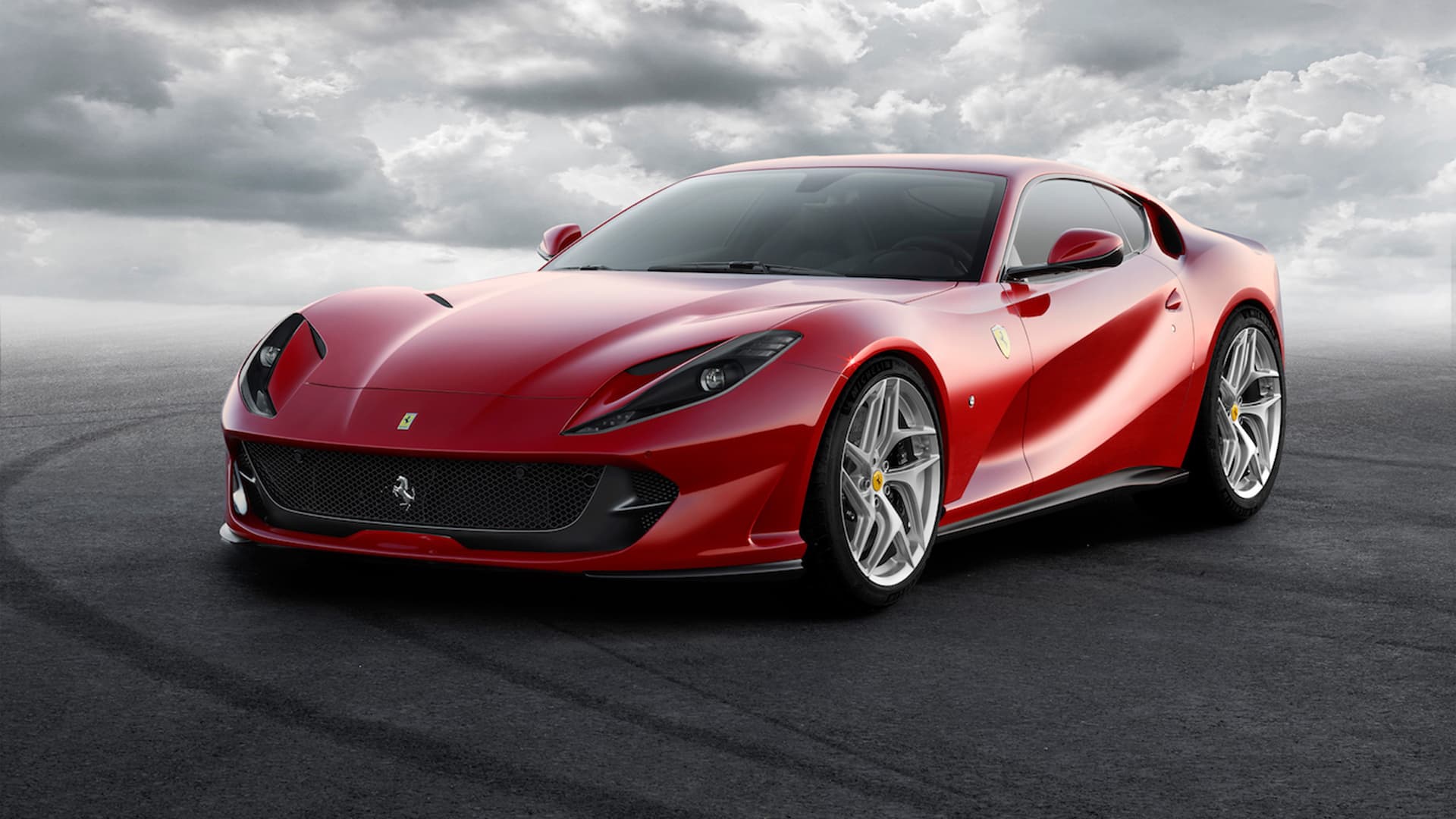
2017 Ferrari 812 Superfast – 6.5-l V12
© FerrariAside from the V12 found in a rare Can-Am racer, this is the biggest engine Ferrari has ever produced. Which is certainly apt for a car badged as ‘Superfast’.
The Tipo F140 family of engines has previously appeared in the Ferrari Enzo, Maserati MC12 and LaFerrari. But, at 6.5-liters, the version fitted to the 789 hp Superfast displaces the most.
-
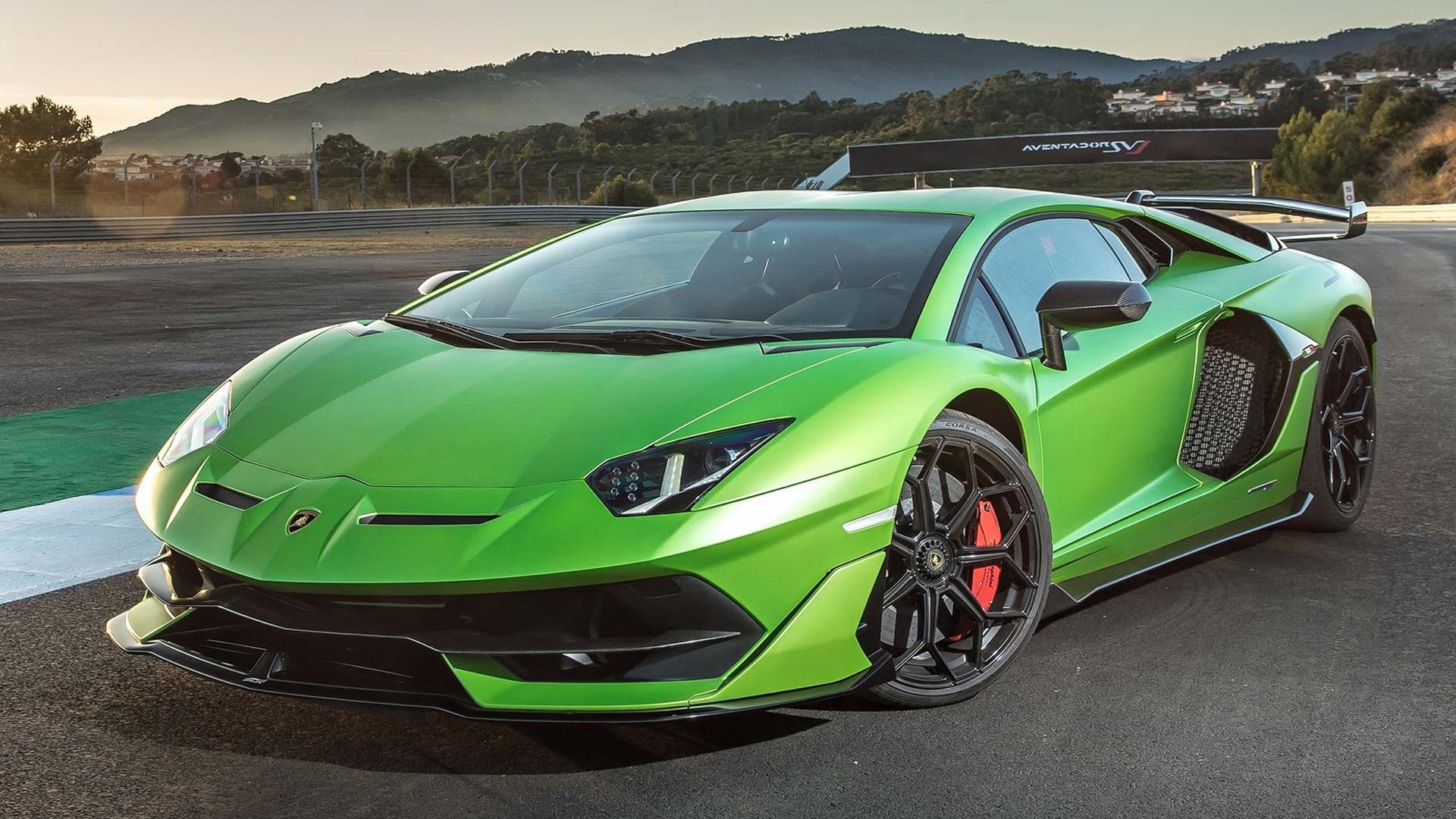
2022 Lamborghini Aventador LP-780-4 - 6.5-l V-12
© LamborghiniLamborghini really does not like to change things when it comes to big engines. This 6.5-liter unit is only the second V-12 design in the company’s history. It replaced the original version, which was in use from 1963 through to 2011.
Now, in 2021, the naturally aspirated V-12 will come to an end. Lamborghini will ensure it goes out with a flourish, being used to power the Aventador LP-780-4 Ultimae. With 769 hp and 531 lb-ft of torque, the 6.5-liter engine is getting a fitting send off.
-
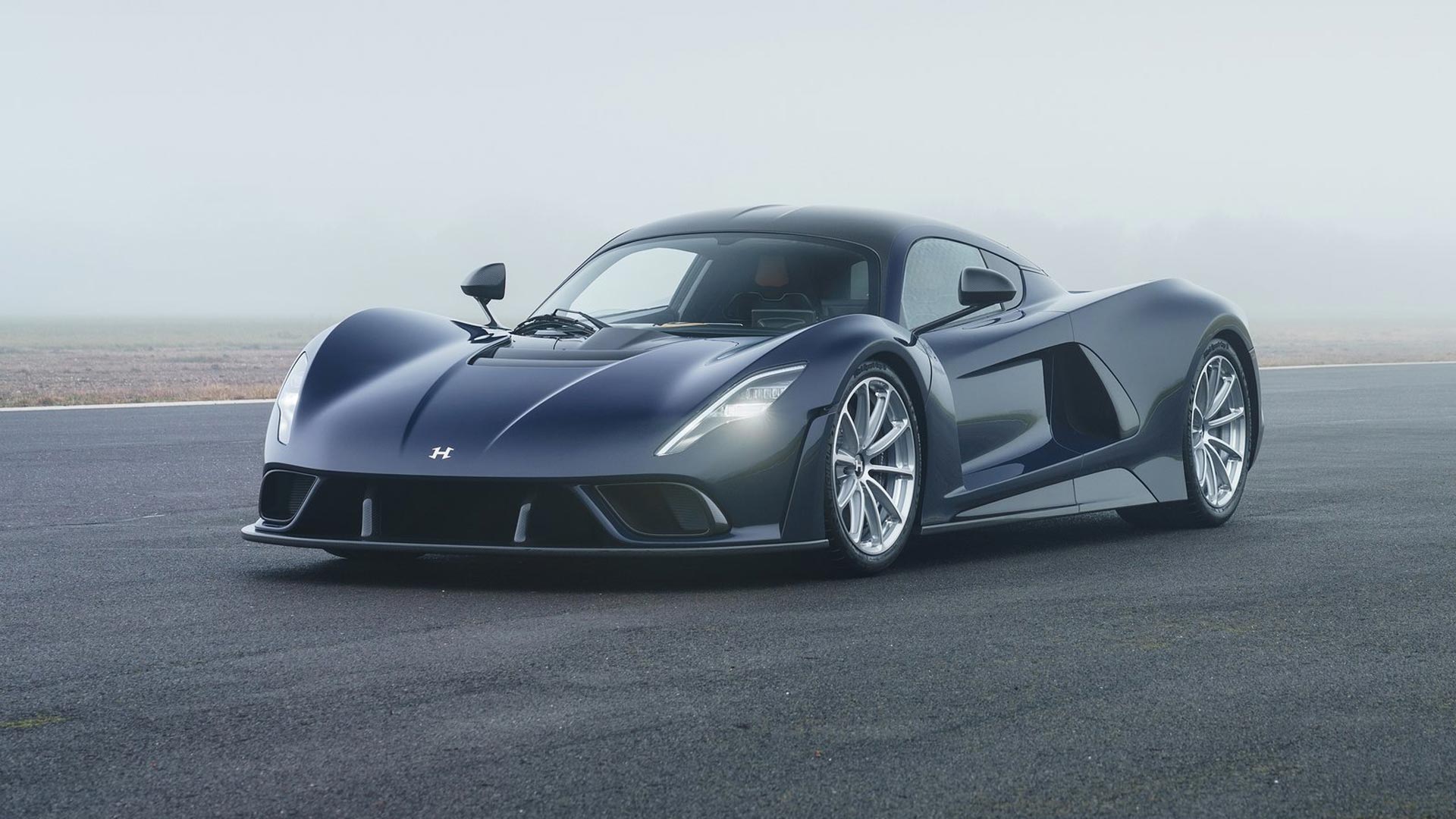
2021 Hennessey Venom F5 - 6.6-l V-8
© HennesseyThe Hennessey Venom F5 is a purpose-designed and built hypercar from the famed Texan tuning company. Hennessey has created the wonderfully named ‘Fury’ engine from scratch, collaborating with oil company, Pennzoil.
Displacing 6.6-liters, and fitted with twin turbochargers, Hennessey estimates that the Fury V-8 will produce some 1,817 hp and 1,193 lb-ft of torque.
Mounted in the middle of the Venom F5, this should be sufficient to achieve a top speed of more than 310 mph.
-
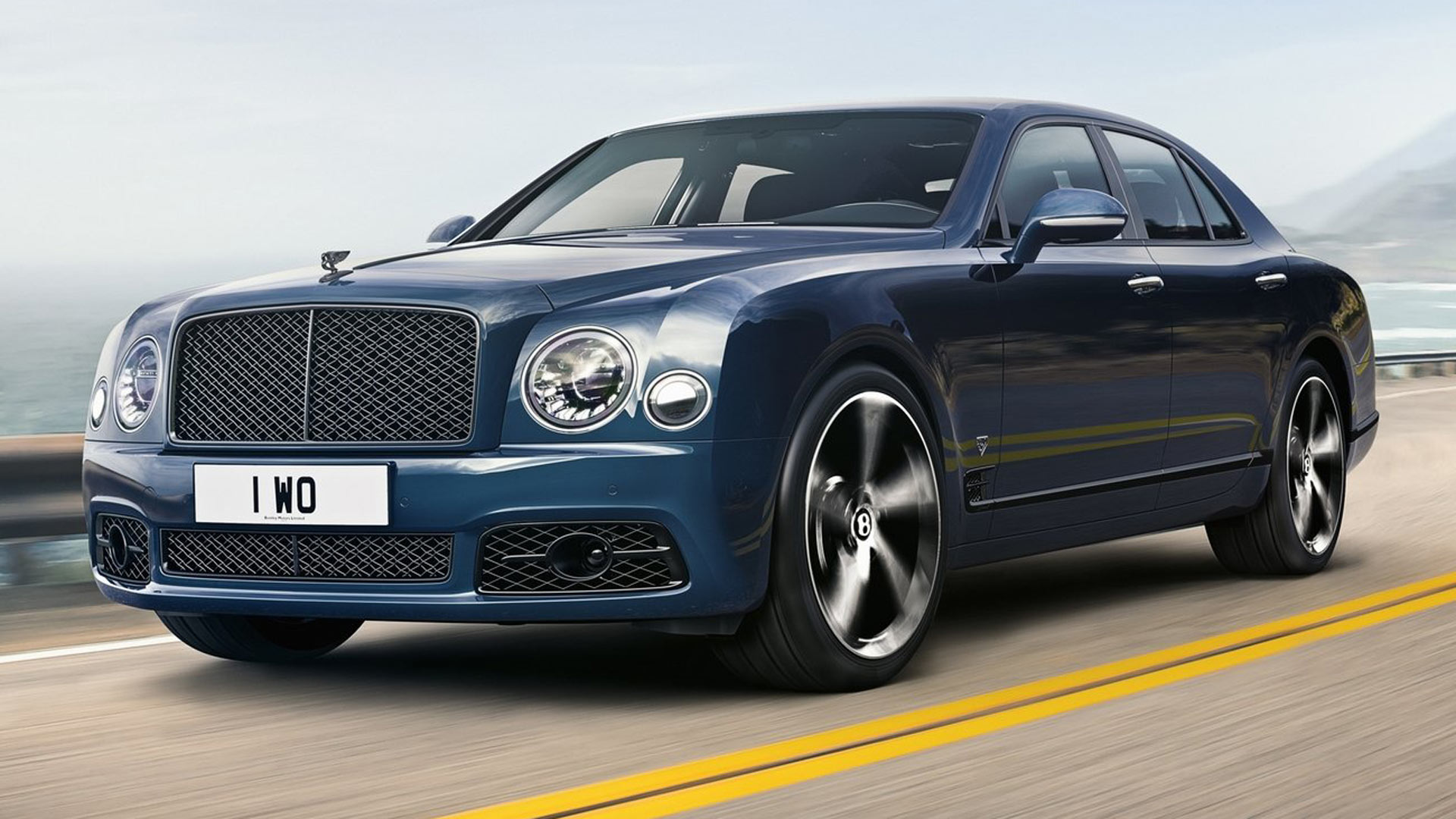
2020 Bentley Mulsanne – 6.75-l V8
© BentleyEven older than the first Lamborghini V12 is this Bentley V8, which can trace its lineage back to 1959. The 6.75-liter version first appeared in 1968, and has powered a number of both Rolls-Royces and Bentleys in the decades since.
Now 2020 marks the end of its lifespan, with the Mulsanne being the final Bentley to use this glorious engine. In final form it produced a considerable 530 hp and 811 lb-ft of torque. Be sure to refer to this as the Six and Three-Quarter engine, rather than a six-point-seven-five. It is British, after all.
-
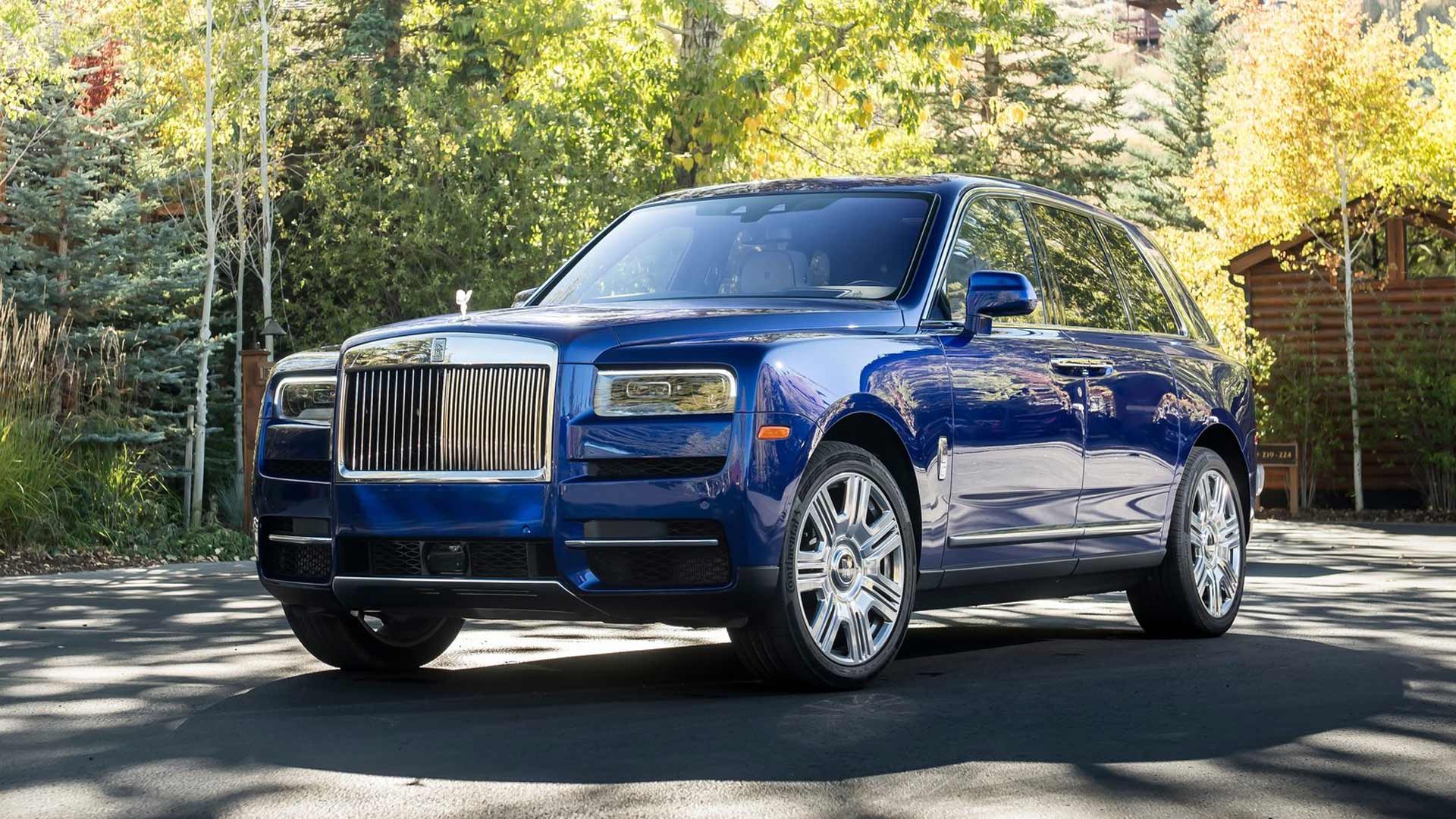
2018 Rolls-Royce Cullinan – 6.75-l V12
© Rolls-RoyceDon’t be fooled. Although it might share the same displacement, this V12 has nothing to do with the Bentley engine, having been created by BMW. When the German company bought Rolls-Royce, it initially planned to develop a V16 engine for the 2003 Phantom.
However, BMW settled on a V12 instead, but has continued to develop and refine the 6.75-liter unit. In the Cullinan SUV, it features twin-turbocharging, delivering 563 hp and 627 lb-ft of torque.
-
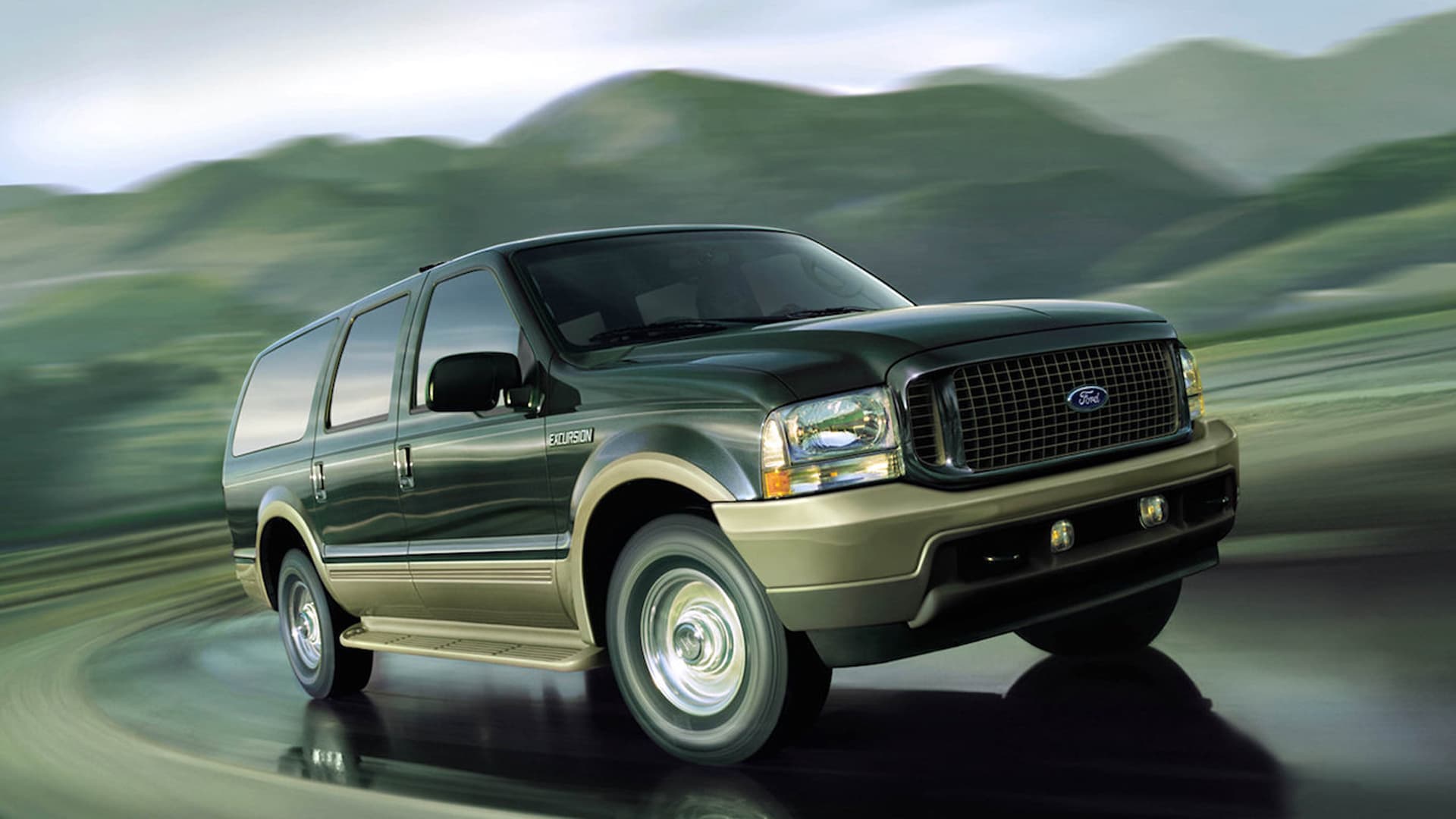
2000 Ford Excursion – 6.8-l V10
© FordEven by American standards, the Ford Excursion was a vast SUV. Sharing a platform with the F-250 Super Duty pick-up truck meant a kerb weight of over 7,200 lb (3,300 kg). Such size meant it could offer seating for nine passengers inside, at least.
This meant the need for a suitably huge engine, with the 6.8-liter Triton V10 doing the business. Fuel economy was predictably dreadful, with rising petrol prices killing off the 310 hp SUV in 2005.
-
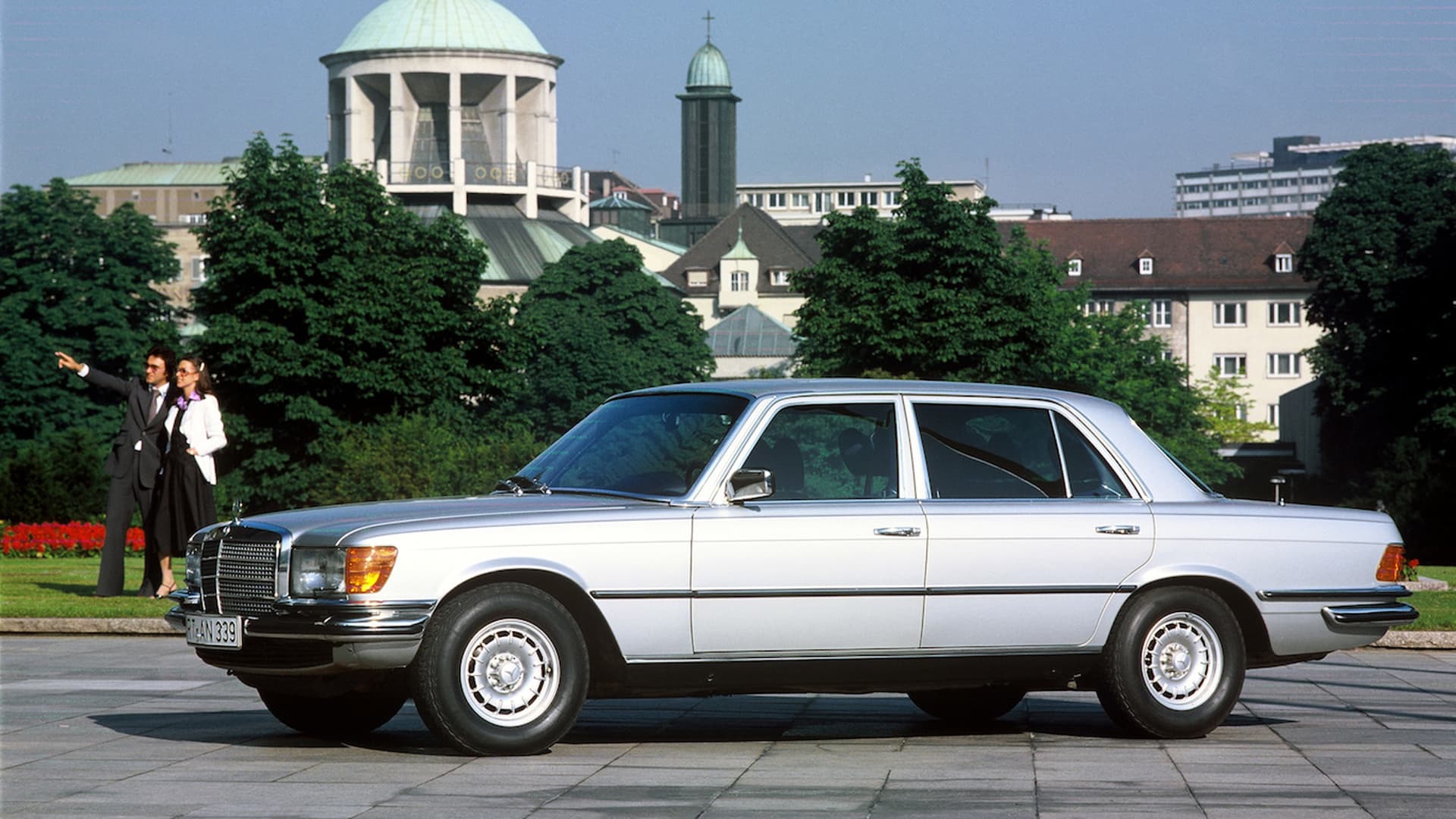
1975 Mercedes-Benz 450SEL – 6.9-l V8
© Mercedes-BenzIt might look unassuming, but back in 1975 this was the ultimate performance Mercedes-Benz. Based on the long-wheelbase version of the S-Class, the 450SEL 6.9 used an enlarged version of the M100 V8 engine fitted to the earlier 300SEL 6.3.
Peak power of 282 hp may seem tame today, but it enabled the 6.9 to hit 0-62mph in seven seconds and on to a top speed of 140mph. It was also the first Mercedes to feature hydropneumatic self-levelling suspension, with the driver able to lower the ride height from the cabin.
-
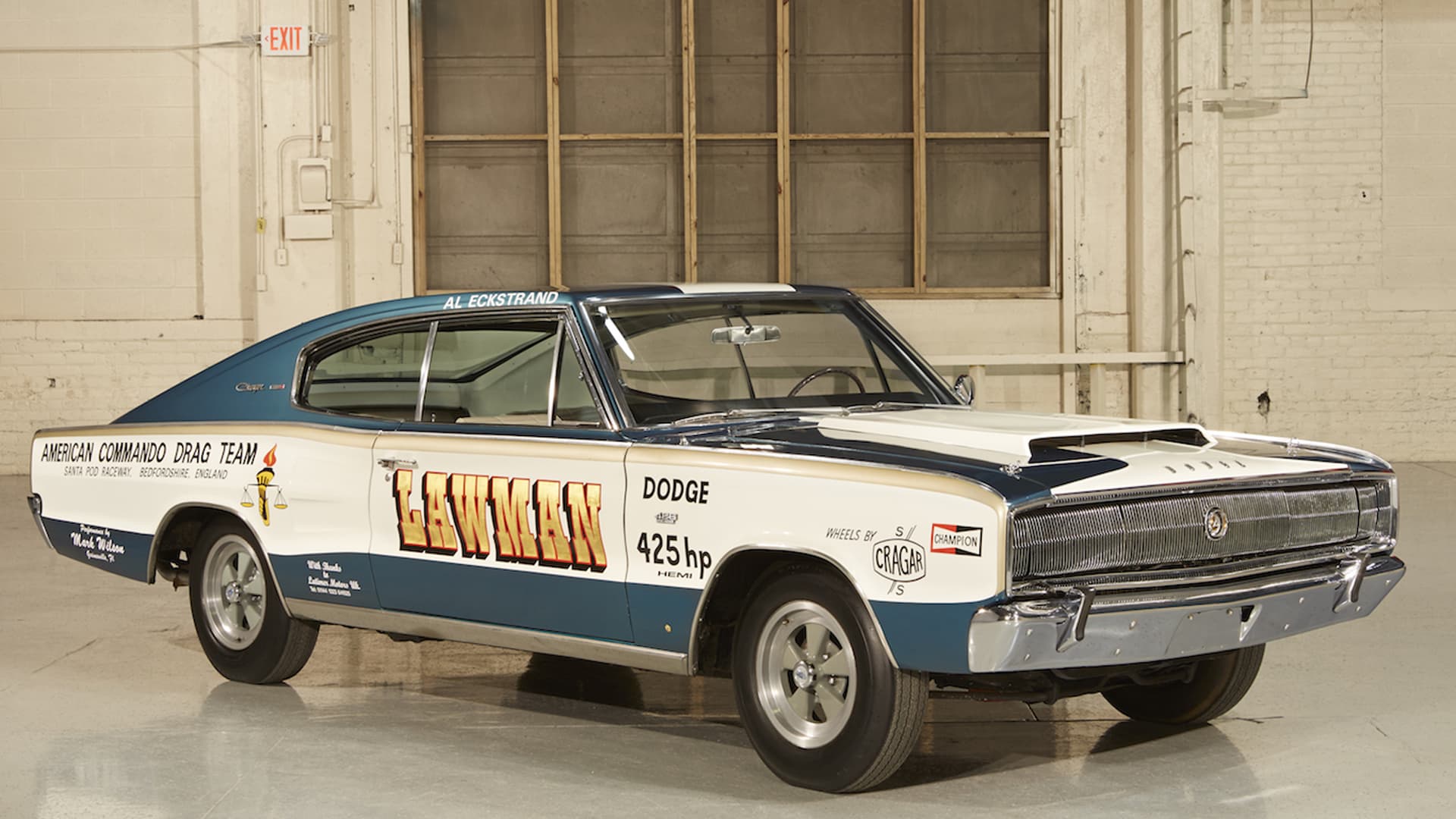
1968 Dodge Charger RT – 426-cubic inch 7.0-l Hemi V8
© DodgeThe 426 Hemi V8 holds a very special place in muscle car folklore. Essentially a NASCAR race engine sold for street use to meet homologation requirements, the 426 was nicknamed the ‘elephant engine’ for its size and power.
Offered as an expensive option for a range of Mopar cars, around 11,000 were produced between 1966 and 1971, including the ’68 Charger R/T drag racer pictured here. As noted on the side, power output was 425hp. Today, original 426 Hemi-equipped models are consistently the top sellers at collector car auctions.
-
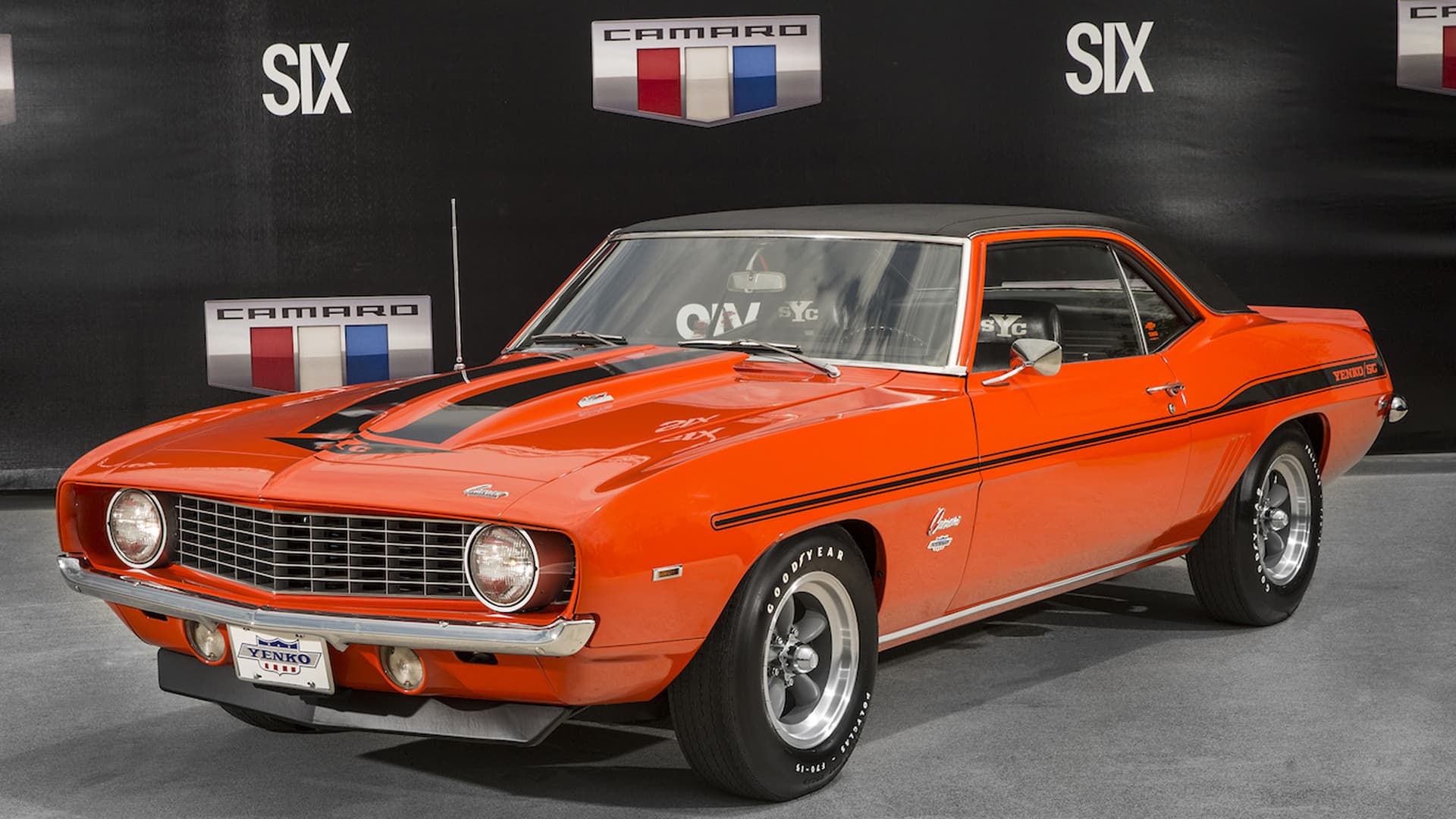
1969 Chevrolet Camaro COPO Z28 – 427-ci 7.0-l V8
© ChevroletWhen first launched in 1967, General Motors ruled that the first-generation Camaro could not be fitted with an engine larger than 400-cubic inches. This placed the Camaro at a disadvantage against key rivals.
However, certain dealerships – such as those run by Don Yenko – would install a Chevrolet 427-cubic inch engine from the Corvette. Once Chevrolet became aware of this, it offered a Central Office Production Order option in 1969, allowing Camaros to unofficially come from the factory with the 450 hp 427 V8.
-
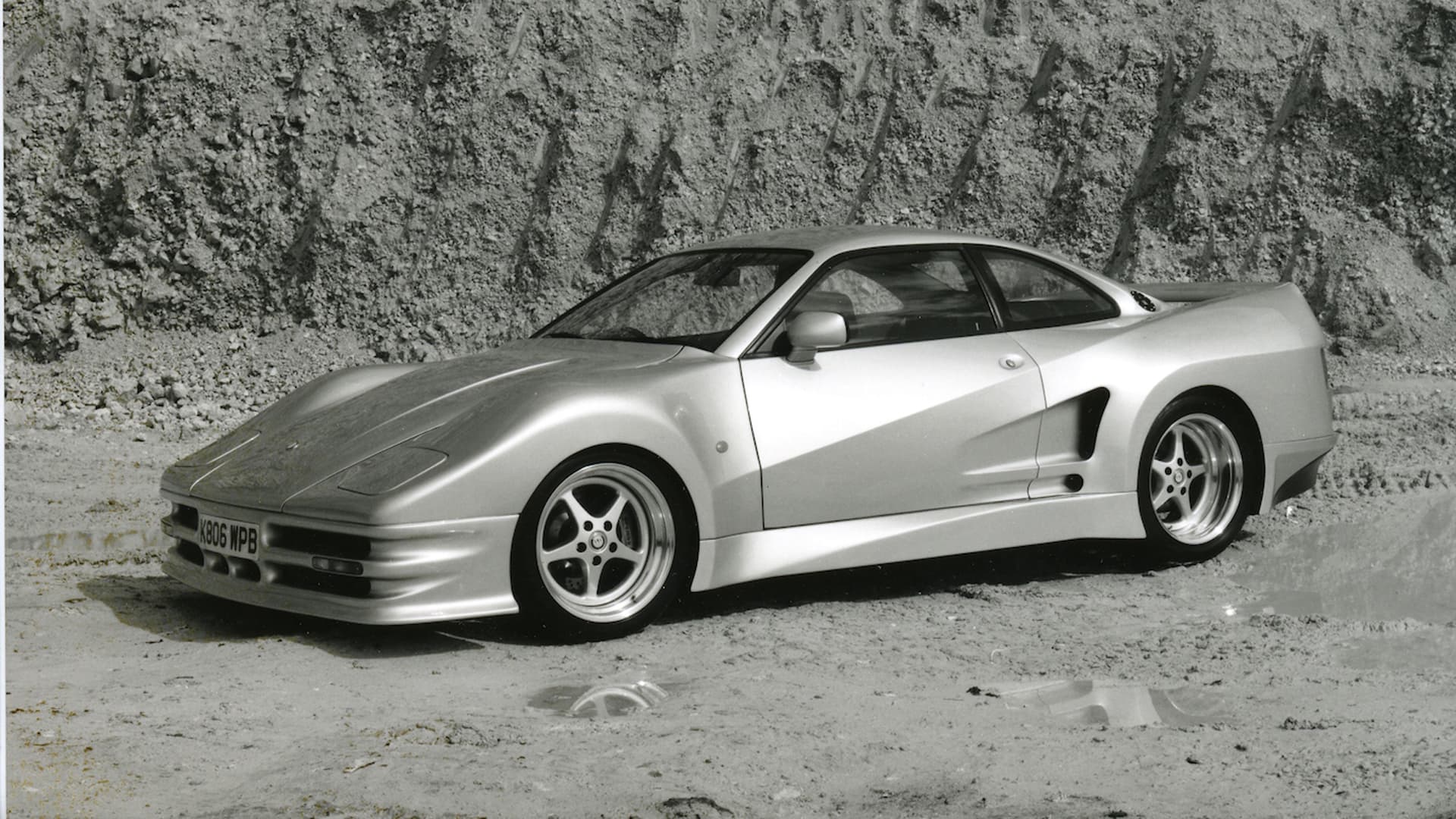
1993 Lister Storm – 7.0-l V12
© ListerIt may be relatively unknown, but the Lister Storm gained a number of accolades when unveiled in 1993. Its Jaguar engine was developed from a Le Mans racer, and was the largest V12 fitted to a road car since World War II.
With 546 hp and 580 lb ft of torque, it also held the record of being the fastest four-seater car in the world, with a top speed of 208 mph. Just four road cars were built, with the Storm also taking to the track at Le Mans and in the FIA GT Championship.
-
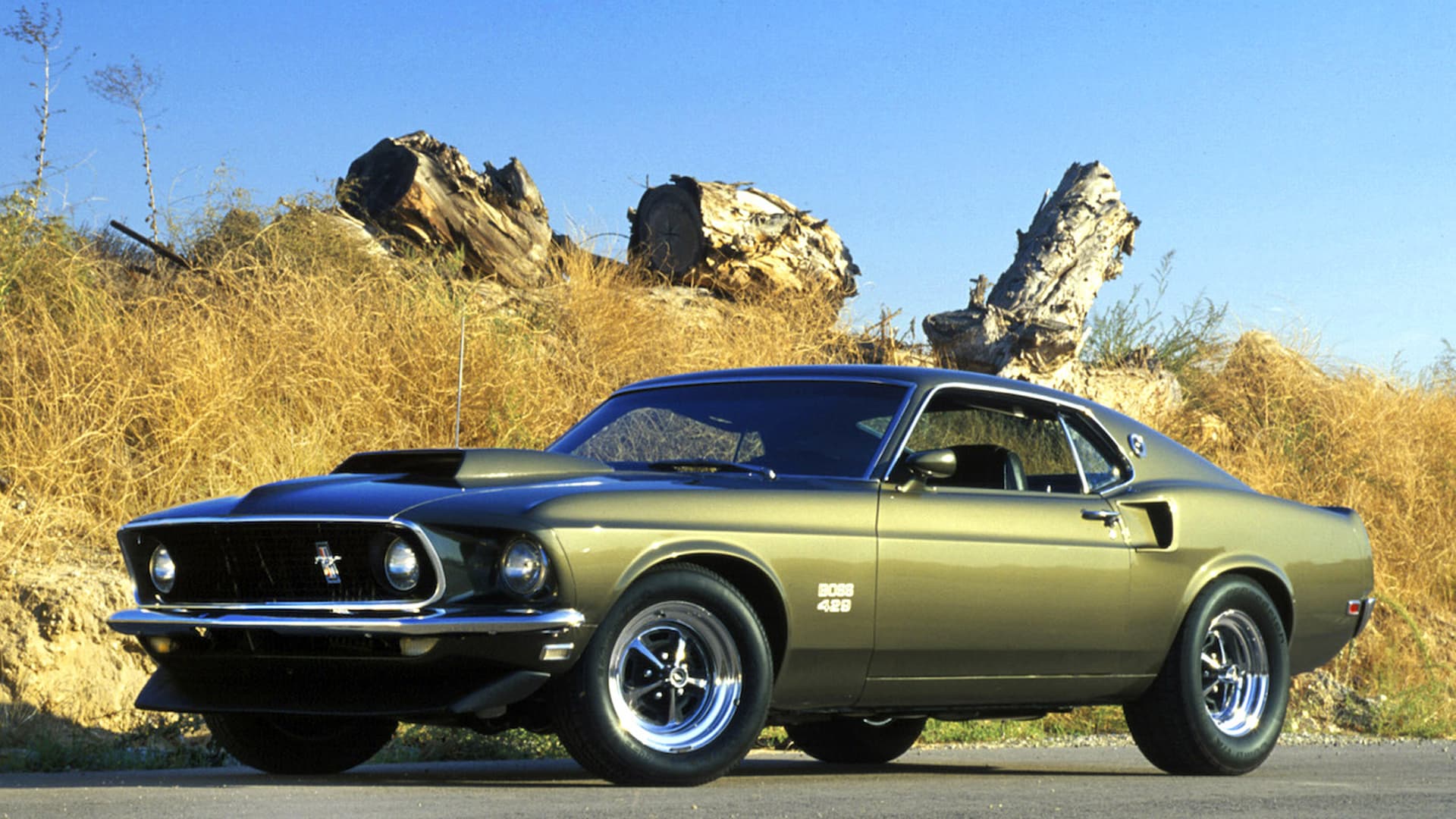
1969 Ford Boss 429 Mustang – 429-ci 7.0-l V8
© FordAs a combatant in the muscle car wars of the 1960s, the Boss 429 Mustang is one of the rarest and most sought-after examples. The 429 V8 engine was built to challenge Dodge’s 426 Hemi on track in NASCAR, but had to be homologated first.
Ford picked the Mustang Fastback to host the powerful engine, with a total of 1,350 examples produced between 1969 and 1970. Although rumors claim much larger outputs, the Boss 429 was officially rated with 375 hp and 450 lb-ft of torque.
-
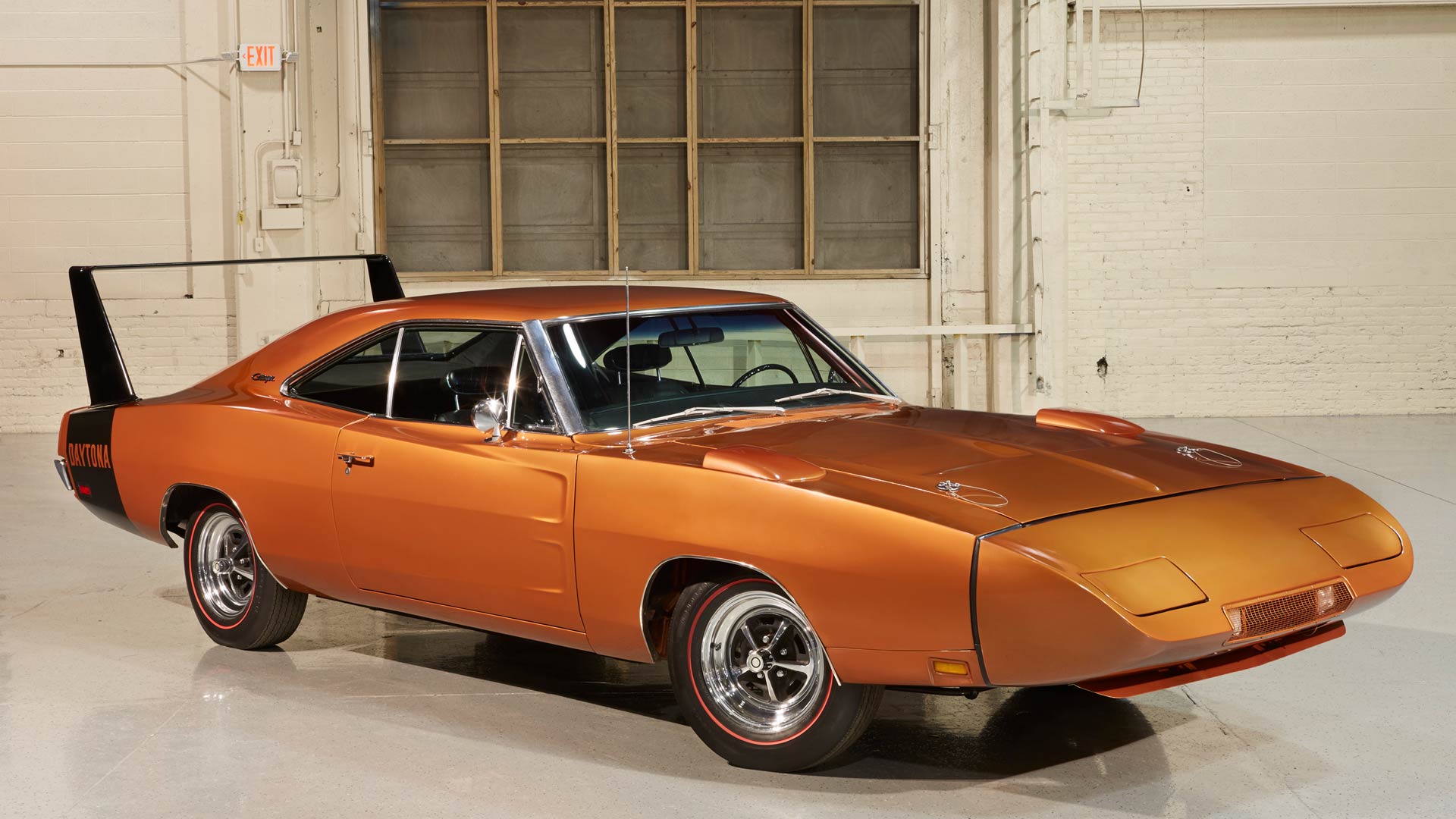
1969 Dodge Charger Daytona – 440-ci 7.2-l V8
© DodgeThe 426 Hemi may have been more powerful, but the 440-cubic inch version was the biggest, and thus ranks higher on our list. It was also far more common, with more than 20 different Mopar models making use of it between 1965 and 1978.
The peak for the 440 was from 1969 to 1971, when a version with six carburettor barrels was offered. This resulted in an impressive 390 hp, with an accompanying 490 lb-ft of torque. That setup could be found inside the rare Dodge Charger Daytona ‘Aero Warrior’.
-
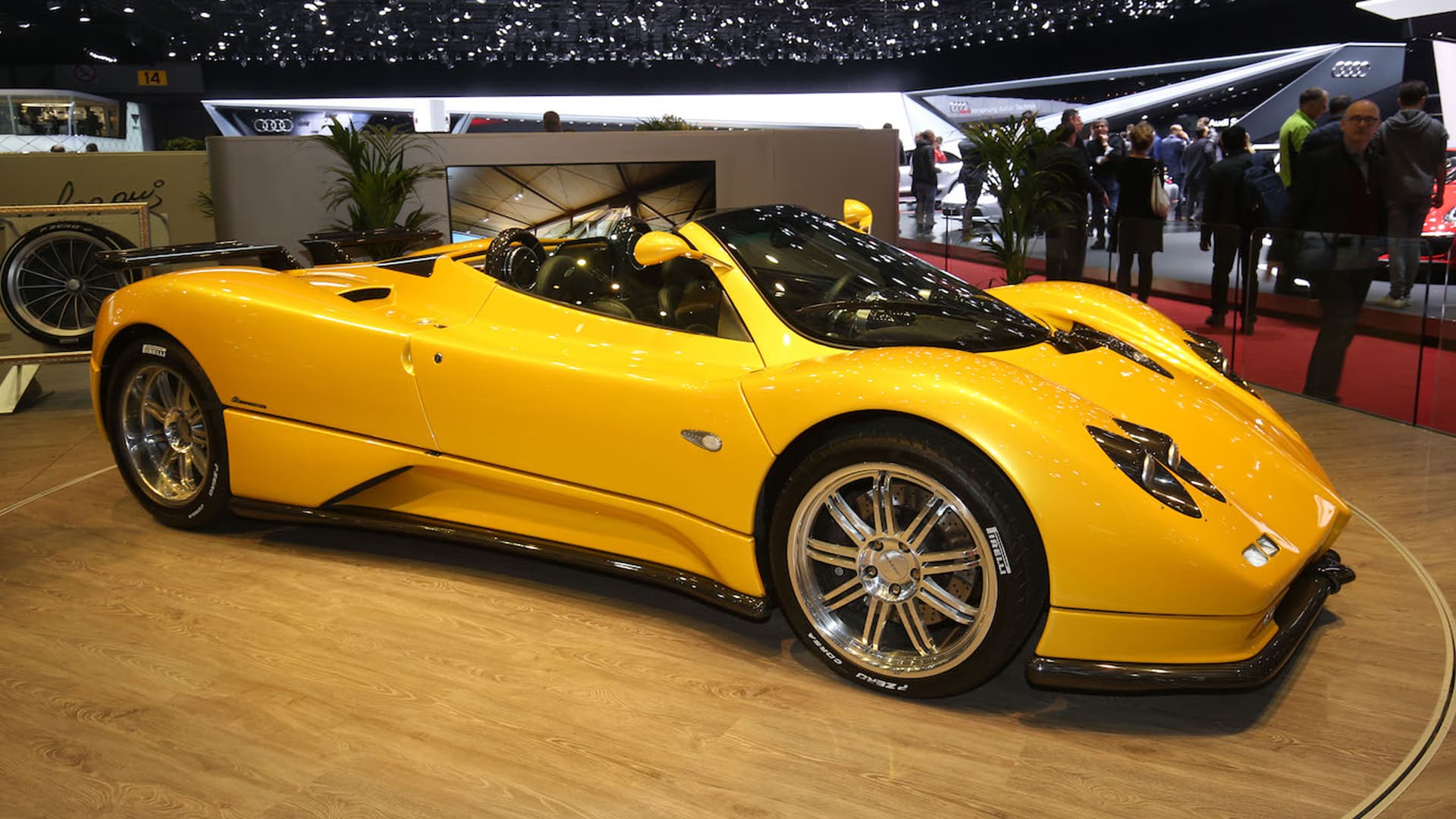
2003 Pagani Zonda S Roadster – 7.3-l V12
© PaganiPagani has famously made use of Mercedes-AMG engines from the outset, with the current Huayra using a turbocharged 6.0-liter V12. But the biggest Pagani motor was used in the earlier Zonda S.
That model gained a 547 hp 7.3-liter version of the naturally-aspirated M120 AMG engine in 2002. A roadster version followed in 2003, making it even easier to enjoy the sonorous sound of the V12.
-
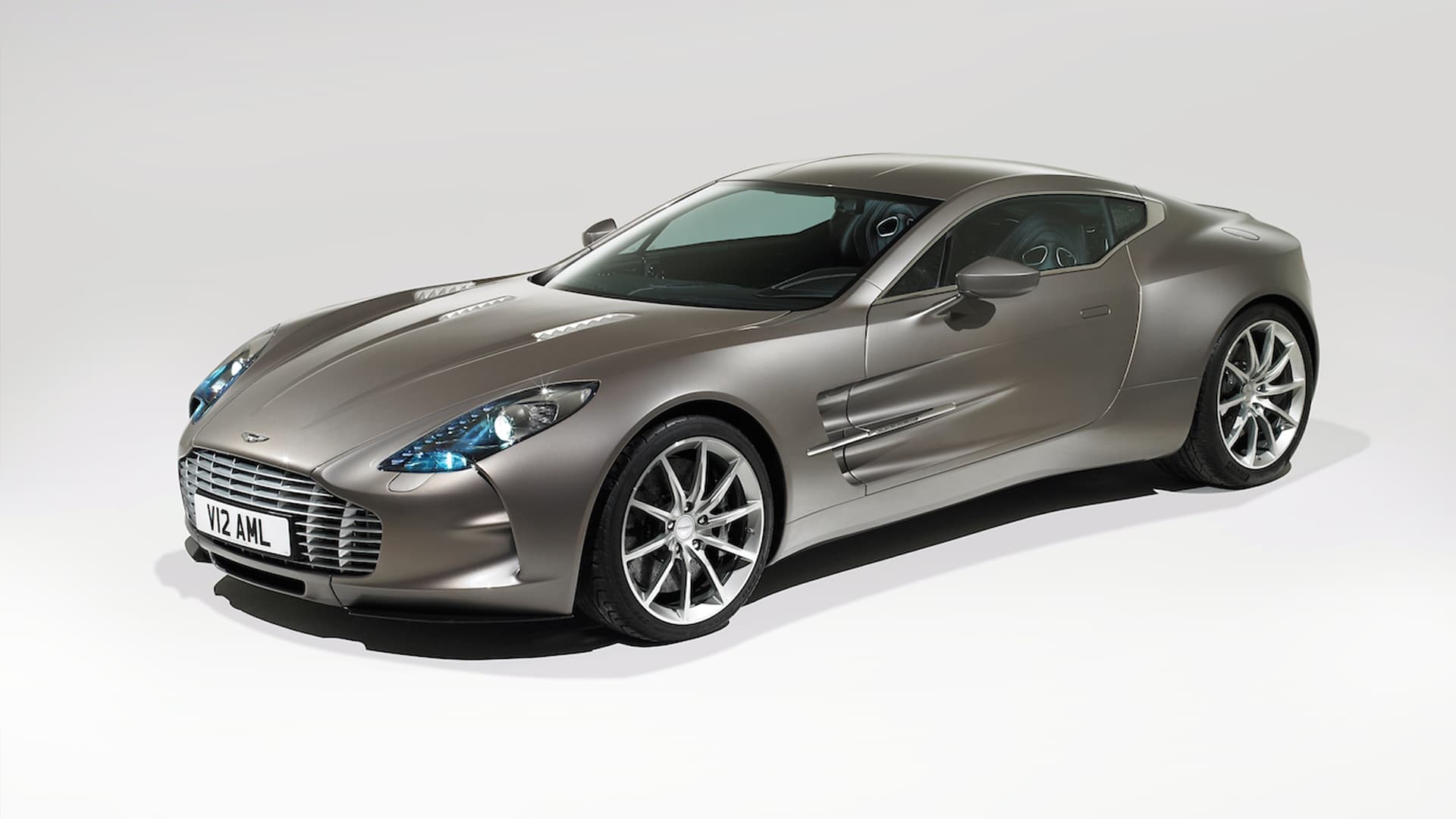
2010 Aston Martin One-77 – 7.3-l V12
© Aston MartinBilled as the most powerful naturally aspirated production engine in the world when launched, the 7.3-liter V12 fitted to the One-77 is rather special. Production was limited to only 77 examples, with a giant price tag to match.
With 750hp, the flagship Aston was capable of hitting 0-62mph in 3.7 seconds, with a top speed in excess of 220mph.
-
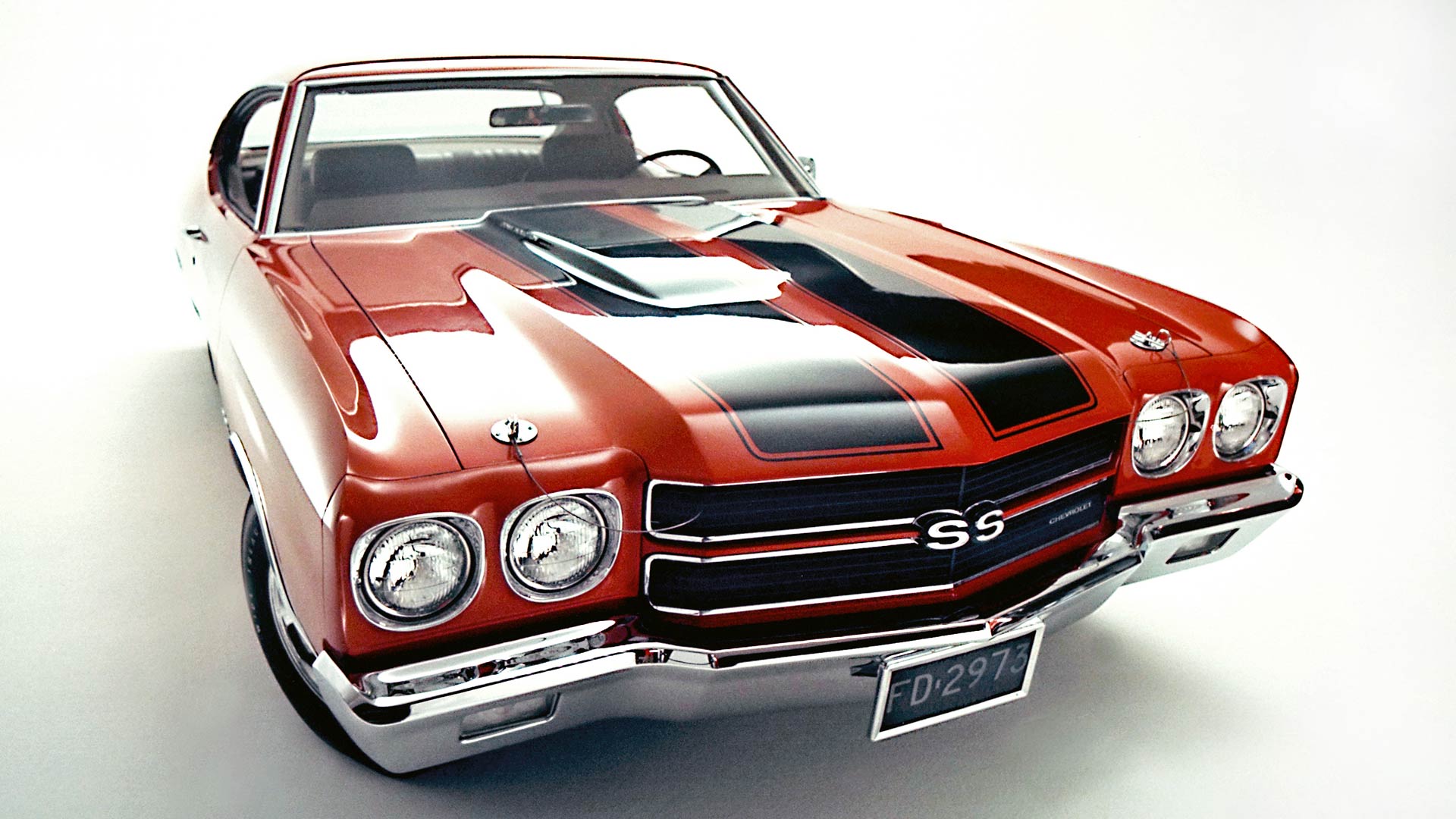
1970 Chevrolet Chevelle SS 454-ci 7.4-l V8
© ChevroletA genuine legend in the muscle car world, the 1970 Chevelle SS could be fitted with truly terrifying performance. Even the base 454-ci V8 came with 360hp, which was more than sufficient for a 1970’s machine.
Yet ticking the box of the LS6 package added a Holley four-barrel carburettor, which took output to a monster 450 hp and 500 lb-ft of torque. Many believed Chevrolet underrated these figures, with the real number claimed to have exceeded 500 hp.
-
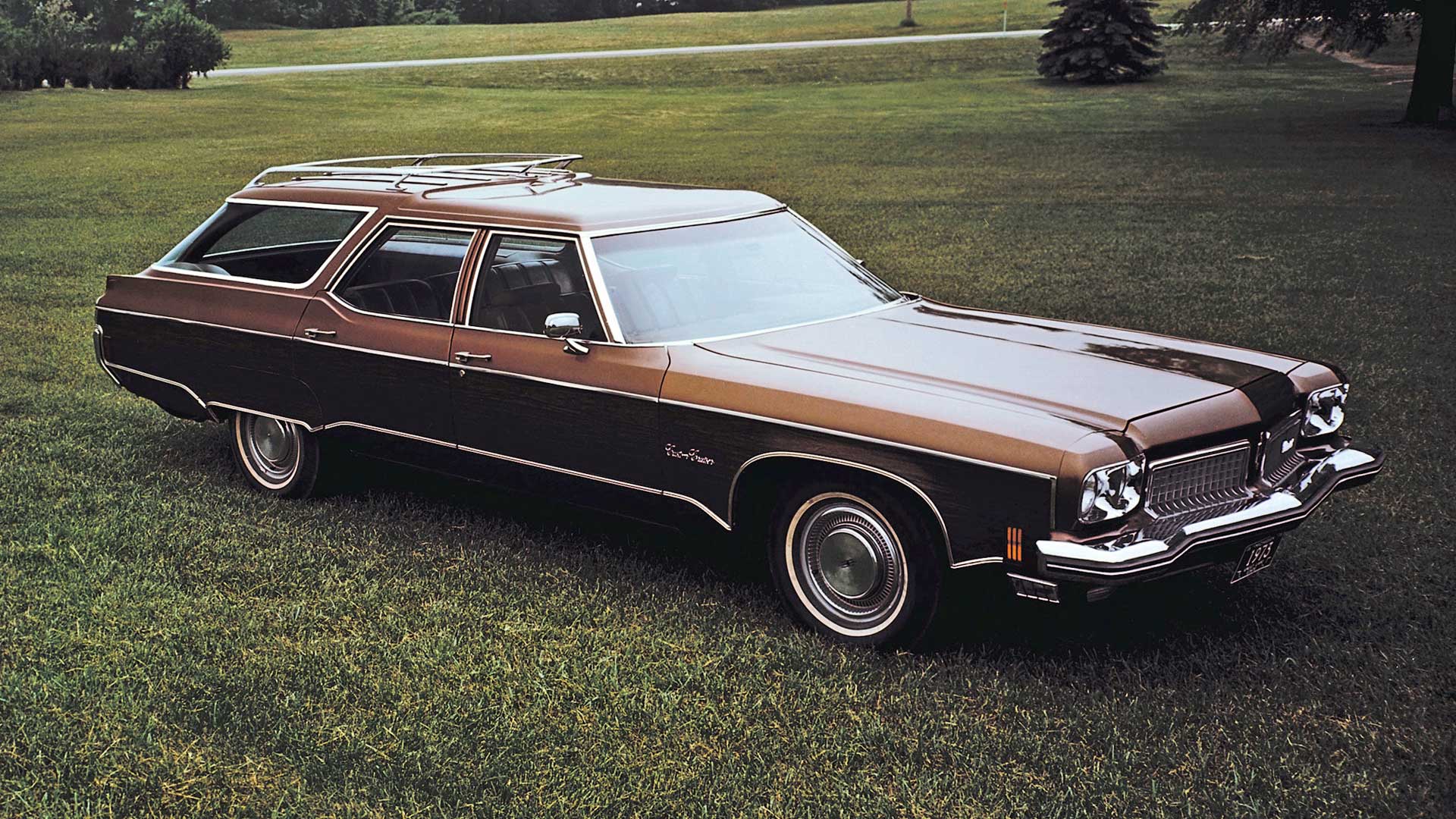
1973 Oldsmobile Custom Cruiser 455-ci 7.5-l V8
© OldsmobileNo, your eyes are not deceiving you. That really is a classic station wagon featuring in our list of the biggest engines. The first-generation Custom Cruiser was the longest-wheelbase Oldsmobile ever made, and could accommodate eight passengers with room to spare.
To haul the massive woodie wagon, Oldsmobile offered the Rocket V8 engine in various states of tune. The 455-ci block peaked in 1974, when it delivered 275 hp and 395 lb-ft of torque. All models came fitted with a three-speed automatic transmission.
-
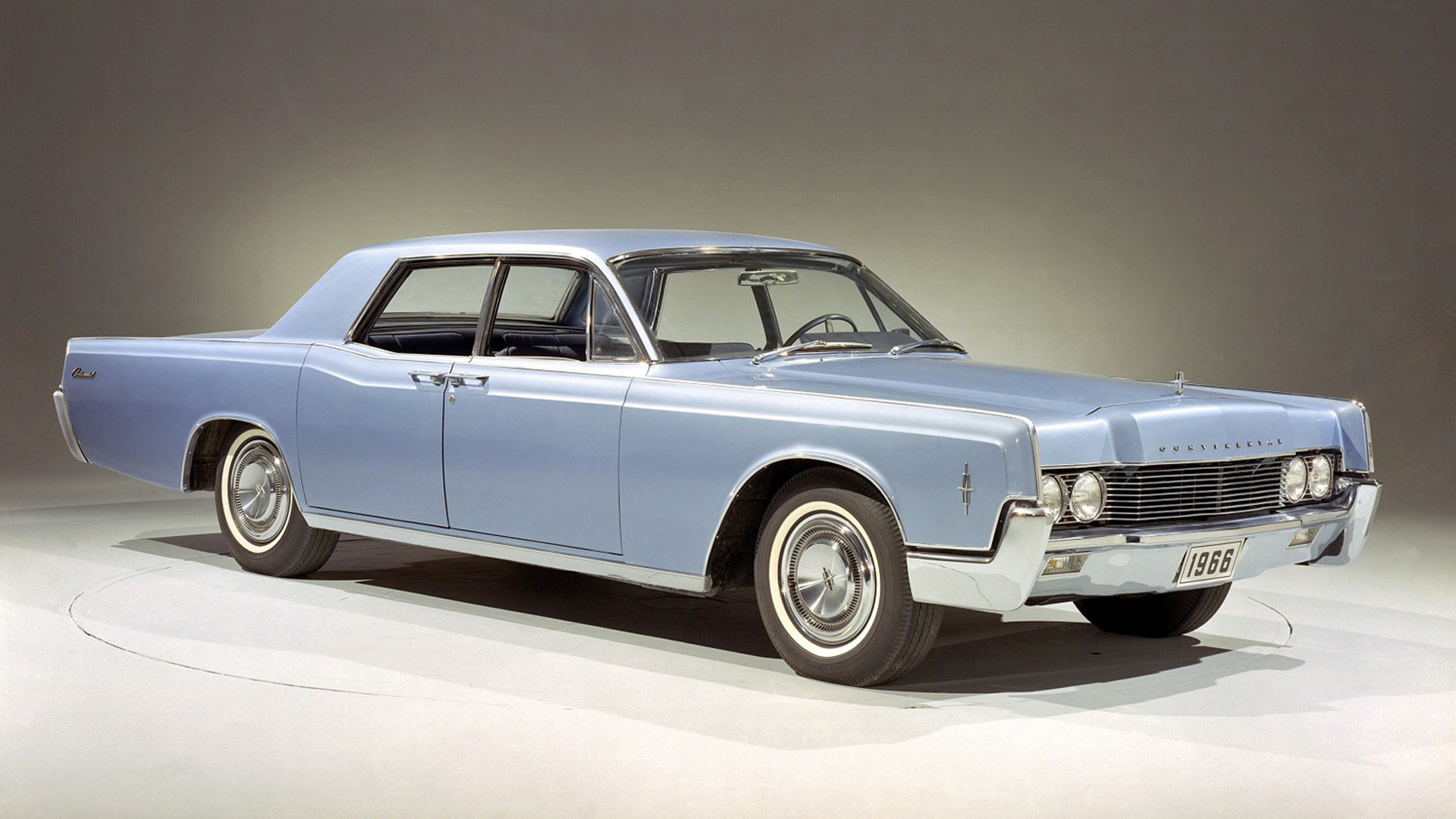
1966 Lincoln Continental – 462-ci 7.6-l V8
© LincolnThe fourth-generation Continental, featuring rear-hinged passenger doors, is perhaps the most recognisable version of the big Lincoln. But by 1966, with the Continental expanding rapidly in size, power also needed to be increased.
The answer was a 462-cubic inch V8 variant of the Ford MEL engine. This was tuned to deliver big torque at low revs, to shift the giant Lincoln. It would only remain in use until the end of the 1969 model year.
-
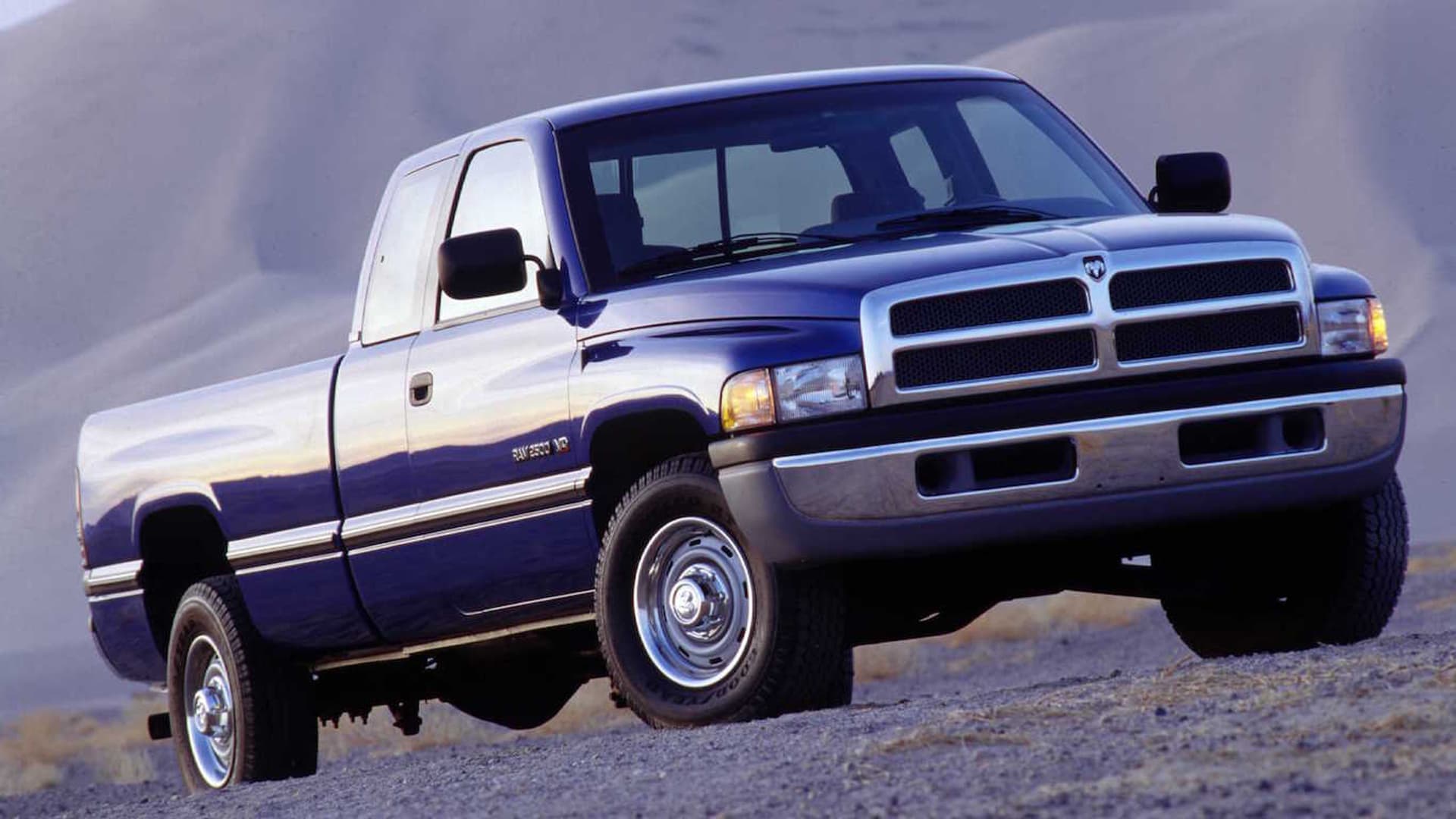
1997 Dodge Ram 2500 – 8.0-l V10
© DodgeIf you wanted to tow big things with your new Dodge Ram in 1997, but had an aversion to diesel power, the Magnum V10 engine was for you. Offered only in the heavy duty 2500 and 3500 versions of the Ram, the 8.0-liter powerplant delivered 300 hp and 450 lb ft of torque.
Perhaps the answer to today’s dieselphobia could be found in equipping more cars with huge ten-cylinder engines?
-
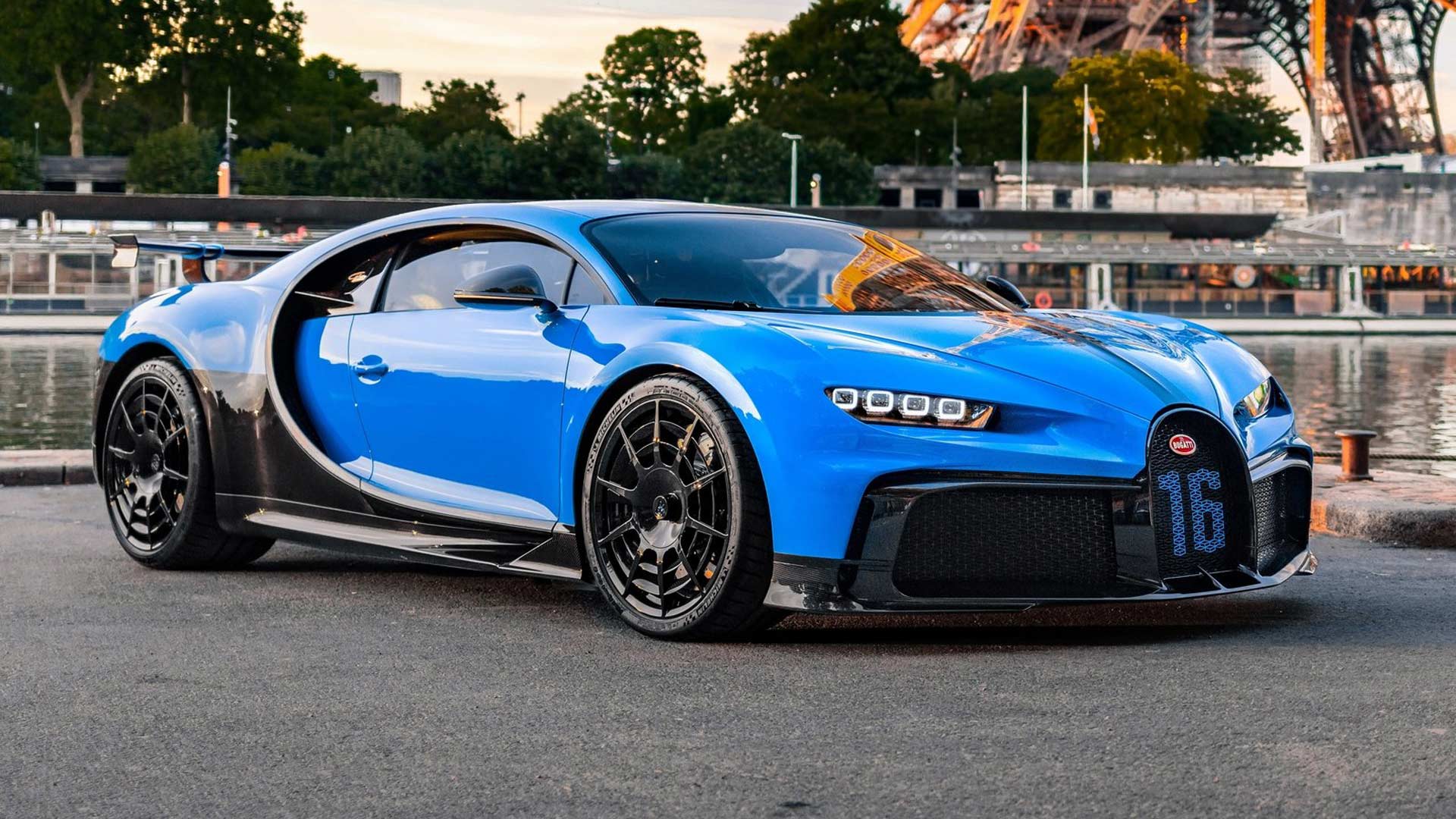
2021 Bugatti Chiron Pur Sport – 8.0-l W16
© BugattiDespite being a car defined by numbers, the 8.0-liter displacement of the Chiron’s W16 engine is one figure that seems to get left by the wayside. Figures such as four turbochargers, an output of almost 1,500hp, and a top speed of more than 260mph seem to grab the attention.
It does still manage to be the largest European-built engine on our list, and certainly proves the benefits of big engines with forced induction.
-
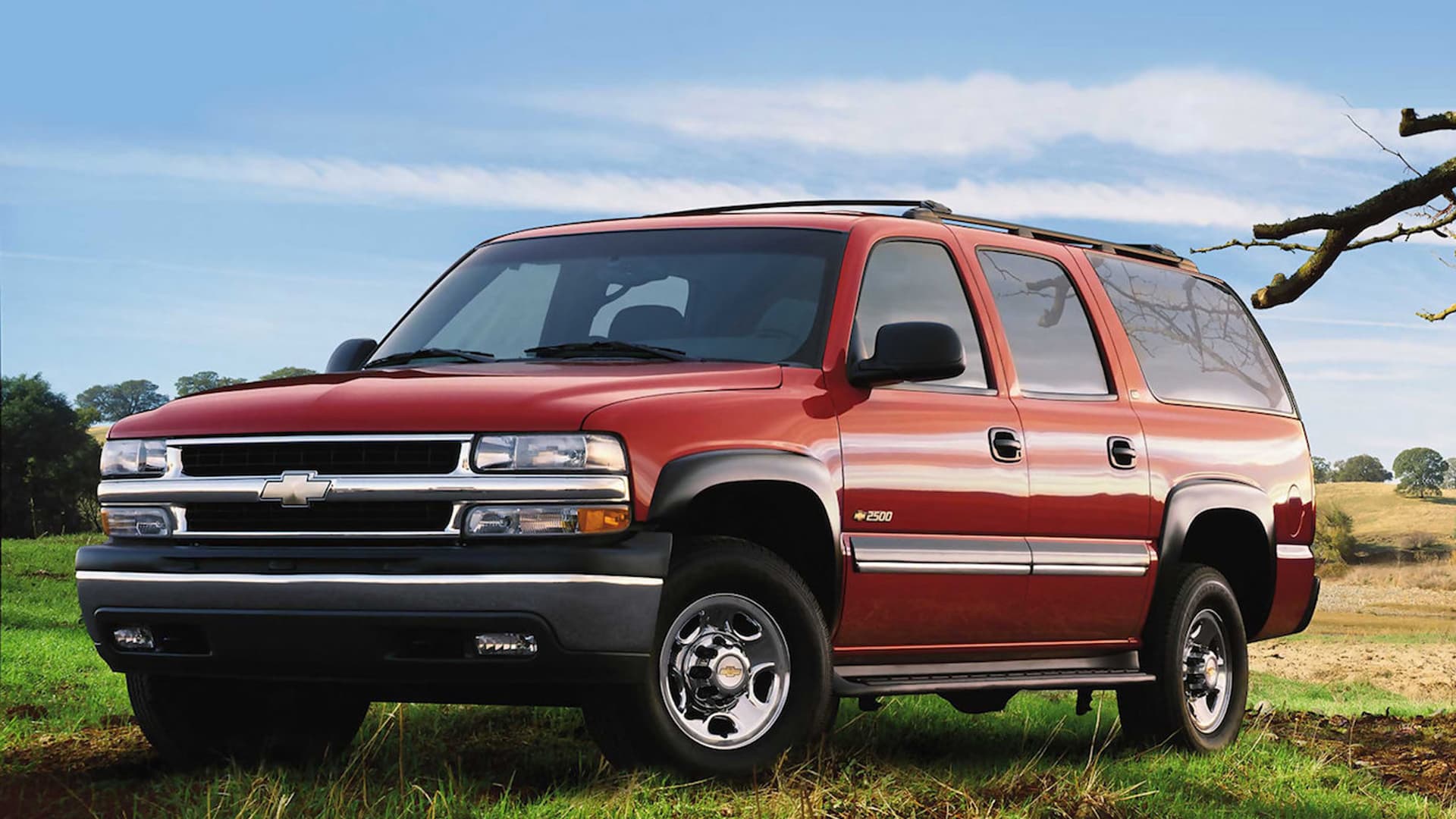
2001 Chevrolet Suburban 2500 – 8.1-l V8
© ChevroletIf you thought the Ford Excursion was the biggest and baddest SUV on our list, think again. Like the Excursion, the Suburban is built on a pick-up truck platform – the Chevy Silverado in this case – and came in heavy duty variants.
Picking the 8.1-liter Vortec option meant 340 hp, and the knowledge that your engine was the same as one used in U-Haul trucks, motorboats and even armored cars. Perfectly suited for running simple errands around town.
-
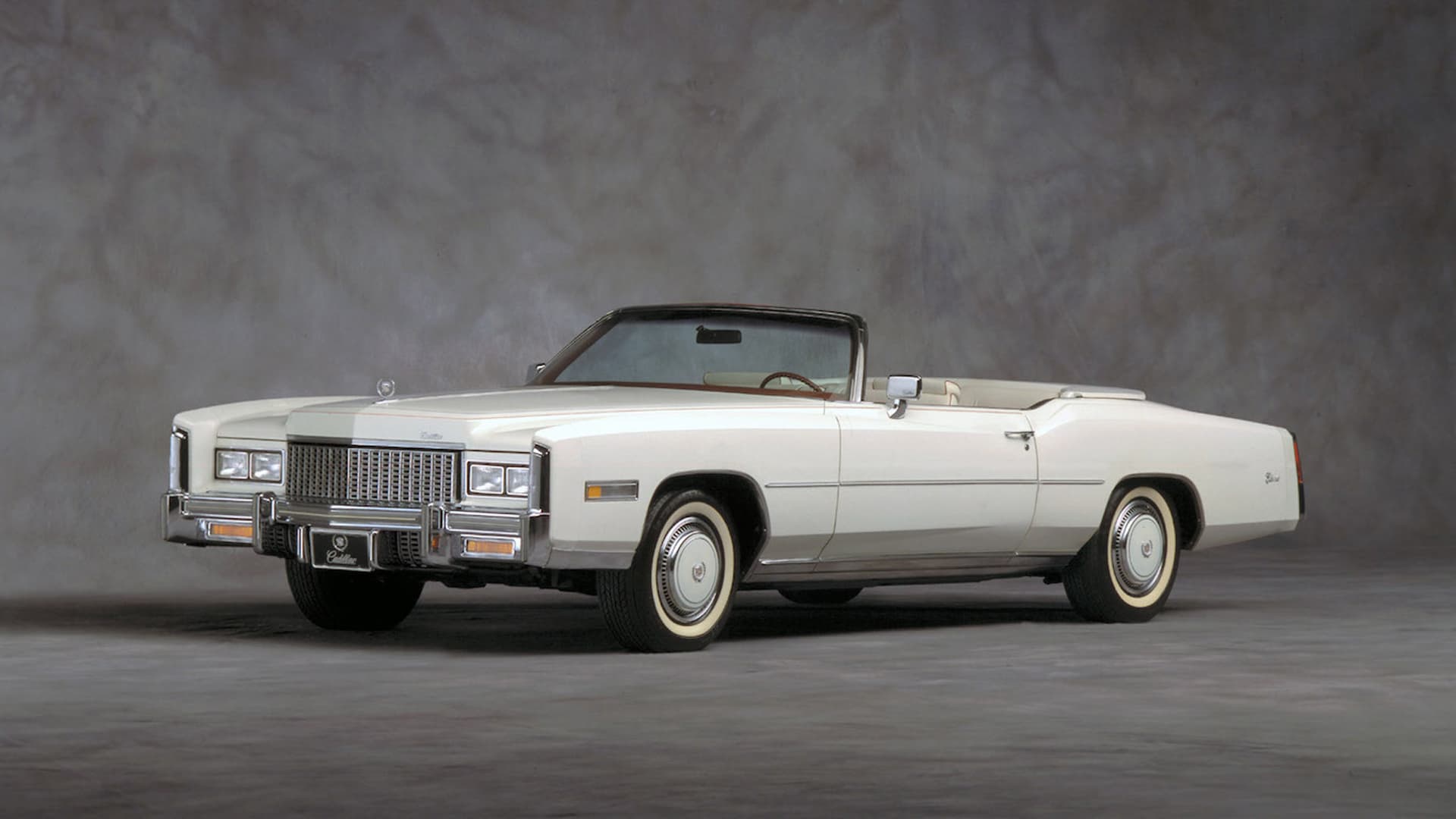
1976 Cadillac Eldorado – 500-ci 8.2-l V8
© CadillacWith the land yachts of the 1970s expanding exponentially, horsepower needed to rise to keep the extra bulk moving. For Cadillac, the answer came with a 500 cubic-inch V8, billed as the world’s largest at the time of introduction in 1970.
Changes to official horsepower ratings, and the need to meet emissions regulations, meant the power output dropped from 400 hp in 1970, to just 190 hp by 1976. Not ideal in a car rocking some 5,070 lb (2,300 kg) of weight.
-
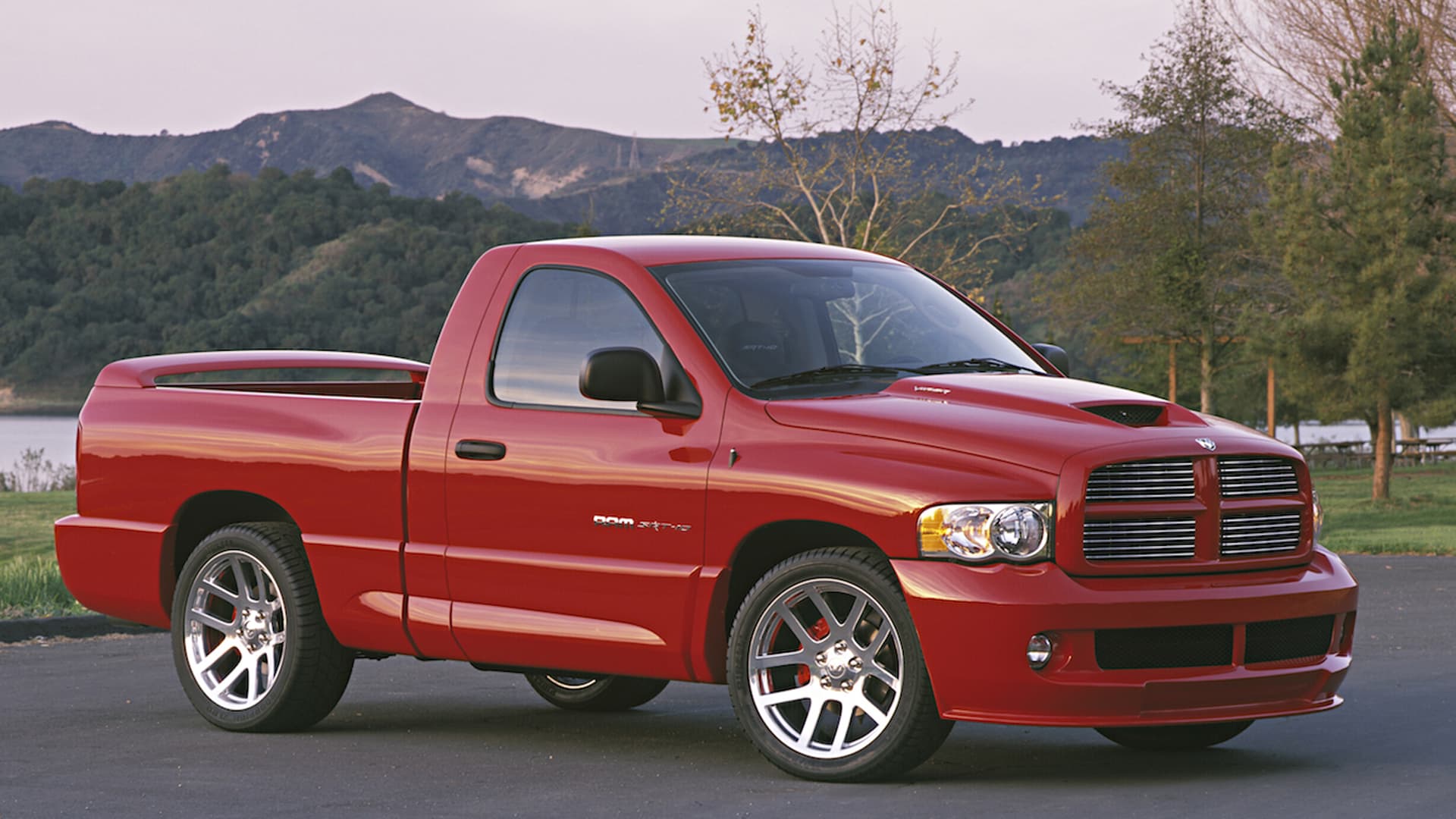
2005 Dodge Ram SRT-10 – 8.3-l V10
© DodgeNot many good things came from the ill-fated DaimlerChrysler merger, but let the Ram SRT-10 be one positive memory at least. Unlike the earlier Magnum version, the SRT-10 was all about acceleration rather than towing. This called for the 8.3-liter engine from the Dodge Viper.
With 500hp and 525lb ft of torque, 0-60mph was just 5.2 seconds away. It turned the SRT-10 into the world’s fastest pickup truck, setting an official Guinness World Record in July 2004. NASCAR racer Brendan Gaughan managed to hit an average speed of 154.587 mph.
-
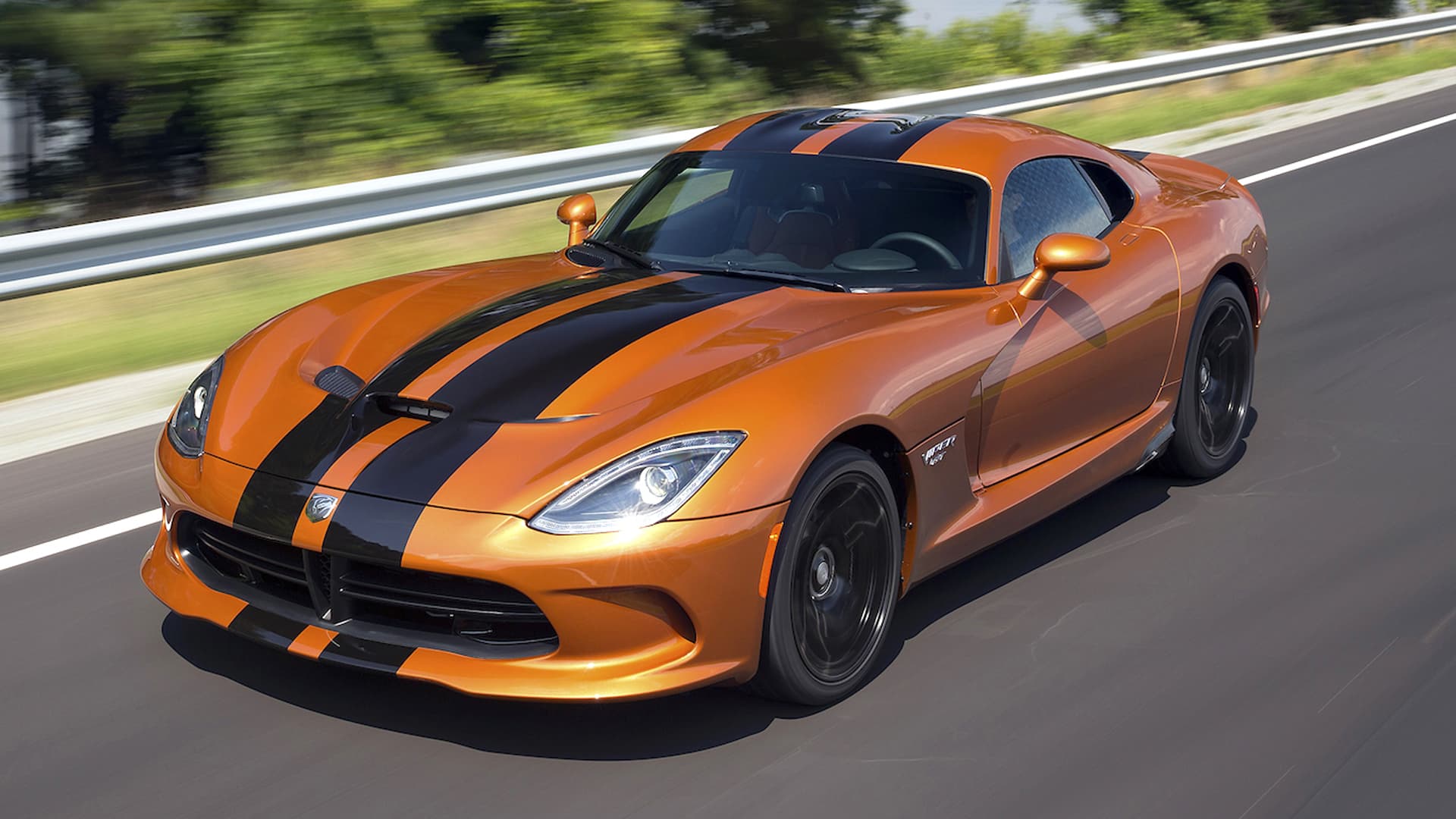
2015 Dodge Viper SRT – 8.4-l V10
© DodgeSeemingly not content with previous efforts, SRT engineers managed to extract another 100 cc from the big V10 in 2008. By its fifth and final generation, power from the 8.4-liter motor had risen to 645 hp.
Performance was equally ridiculous, with 0-60 mph in 3.5 seconds and a 208 mph top speed. With the Viper now consigned to the history books, we have to question whether we’ll ever see a production car with an engine this large again.
-
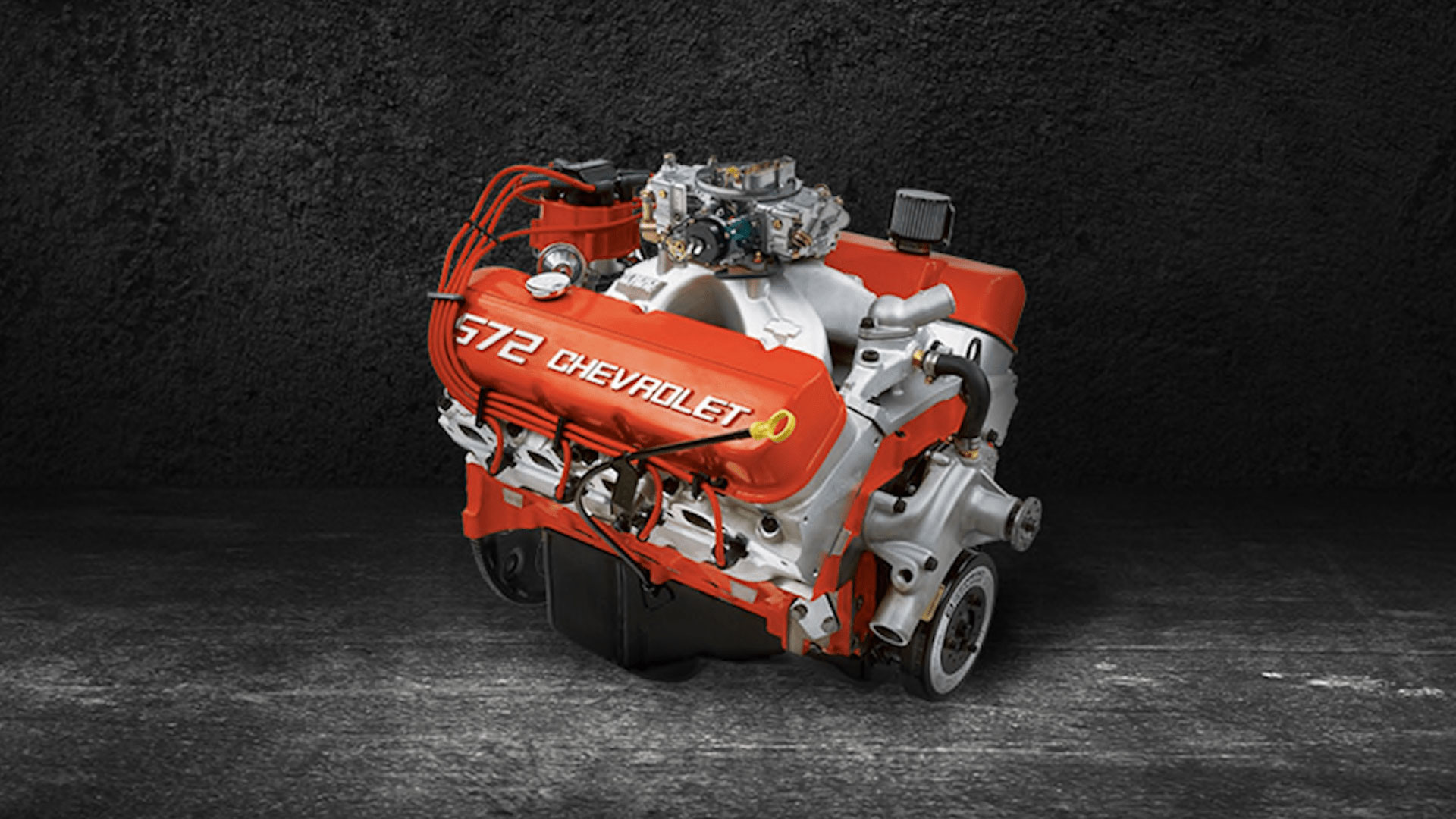
Chevrolet ZZ572 Deluxe – 572-ci 9.4-l V8
© ChevroletIf the previous options are not big enough for you, how about the choice to simply buy an engine and fit it to whatever car you want? Crate motors continue to be big business, with hot rodders being particular fans of Chevrolet offerings.
For maximum performance out of the box, Chevrolet offers a 572-cubic inch V8 producing 621 hp and 645 lb-ft. Use 110-octane race fuel, and the output goes up to a crazy 720 hp. All of this can be had for less than $21,000, although you will need to fit it yourself!
-
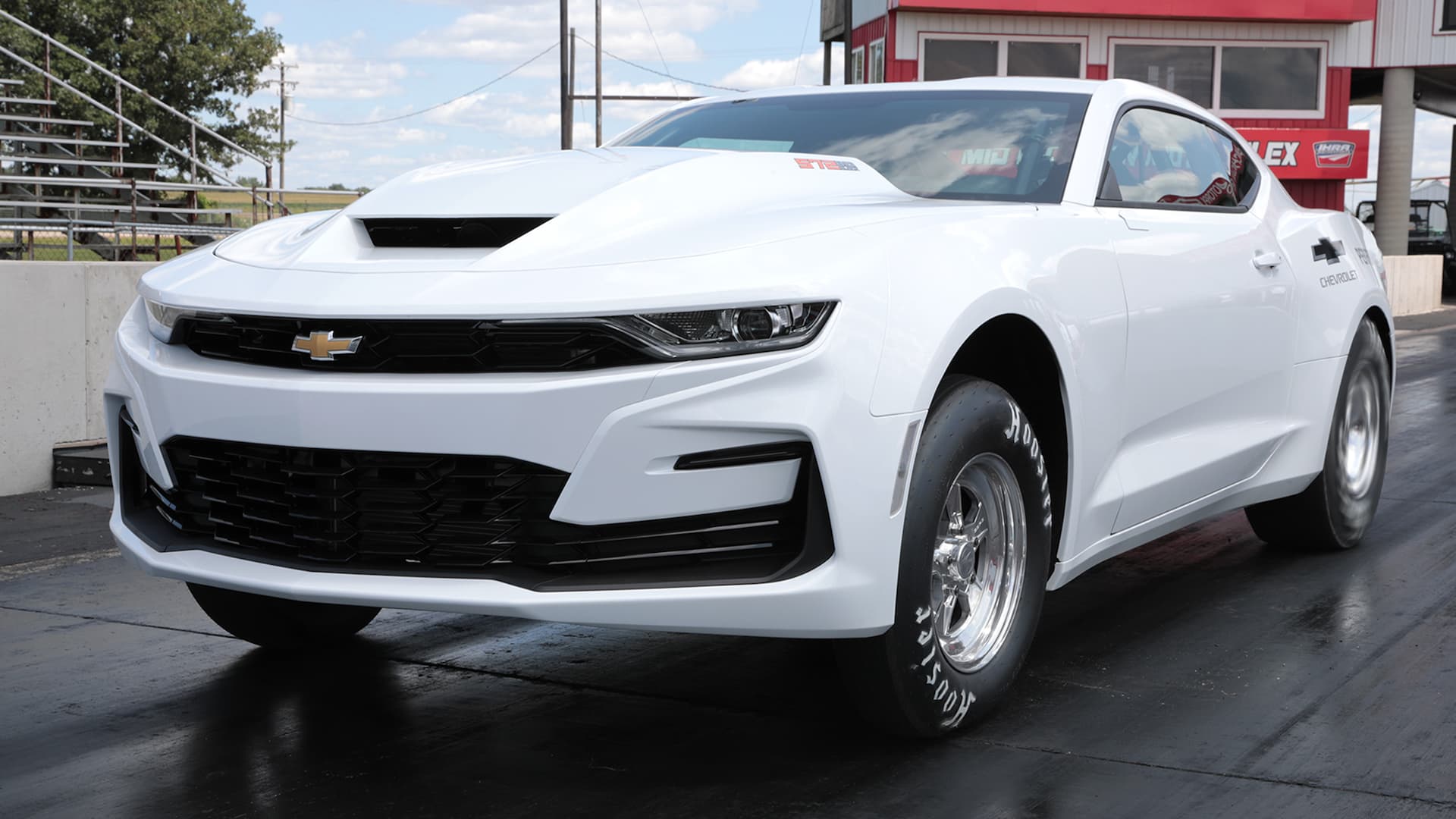
2022 Chevrolet COPO Camaro - 572-ci V-8
© ChevroletShould fitting the 572-cubic inch Deluxe be too much work, Chevrolet will sell you a 2022 COPO Camaro with the huge engine installed. Intended for use on the drag strip, Chevrolet is channeling the spirit of the COPO models from the 1960s to offer a gigantic motor in a Camaro.
Priced from $105,500, the COPO Camaro can compete in NHRA Stock and Super Stock eliminators competitions. It comes as standard with a carbon fiber hood and wheelie bars, with a parachute optional.
-
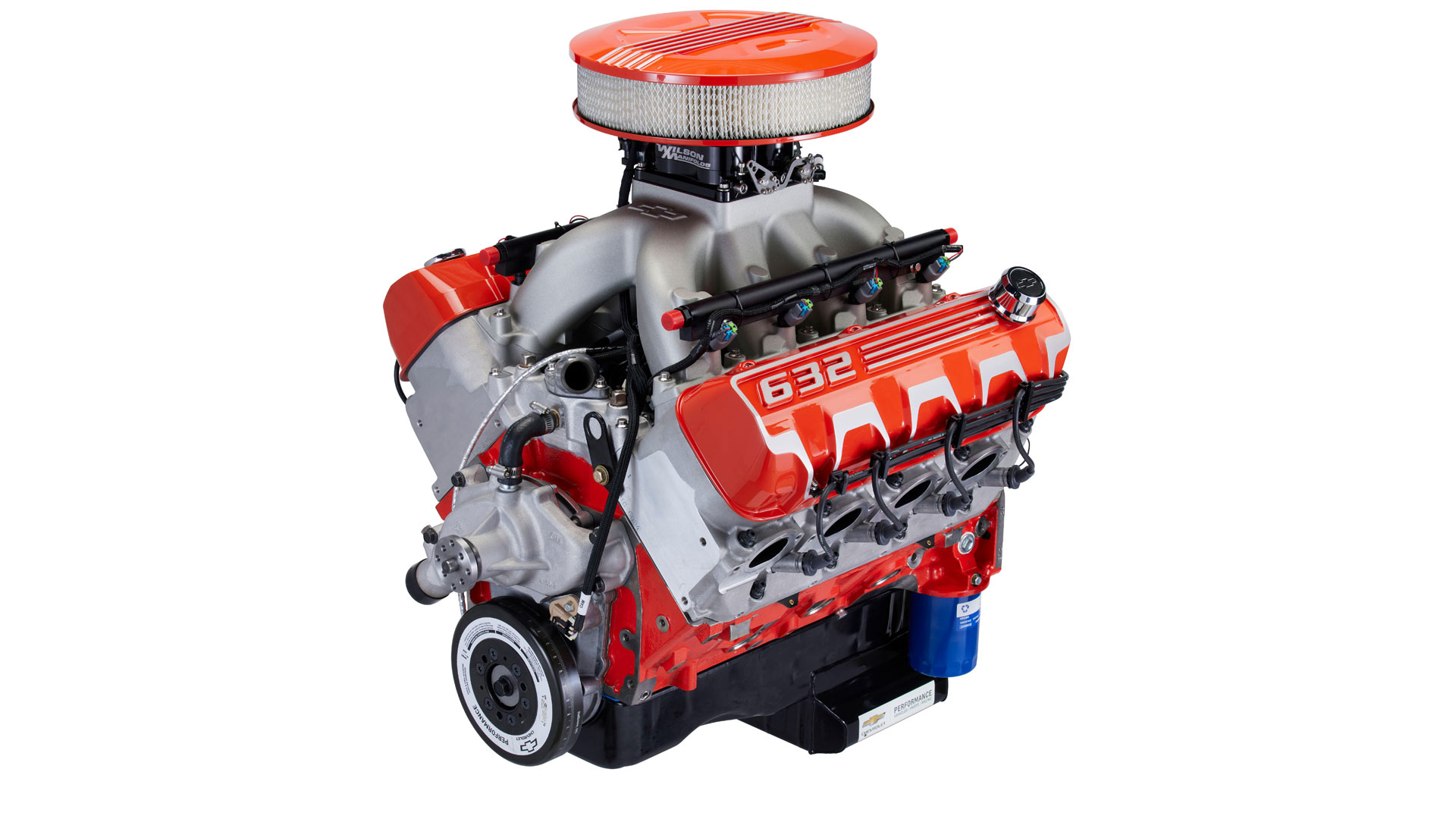
Chevrolet Performance ZZ632 Deluxe - 632-ci V-8
© GMIf a 572-cubic inch V-8 is not quite big enough, Chevrolet has taken things even further with the brand-new ZZ632/1000 Deluxe V-8.
It represents the biggest, and most powerful, crate motor ever offered by Chevrolet. With a 632-cubic inch (10.348-litre) displacement, adding it to a car would see it instantly top our list.
The ZZ632 is not just about size, either. Straight out of the box it generates 1,004 hp, combined with 876 lb-ft of torque, whilst running 93-octane pump gas. For the ultimate engine, the ZZ632 is hard to ignore.
-
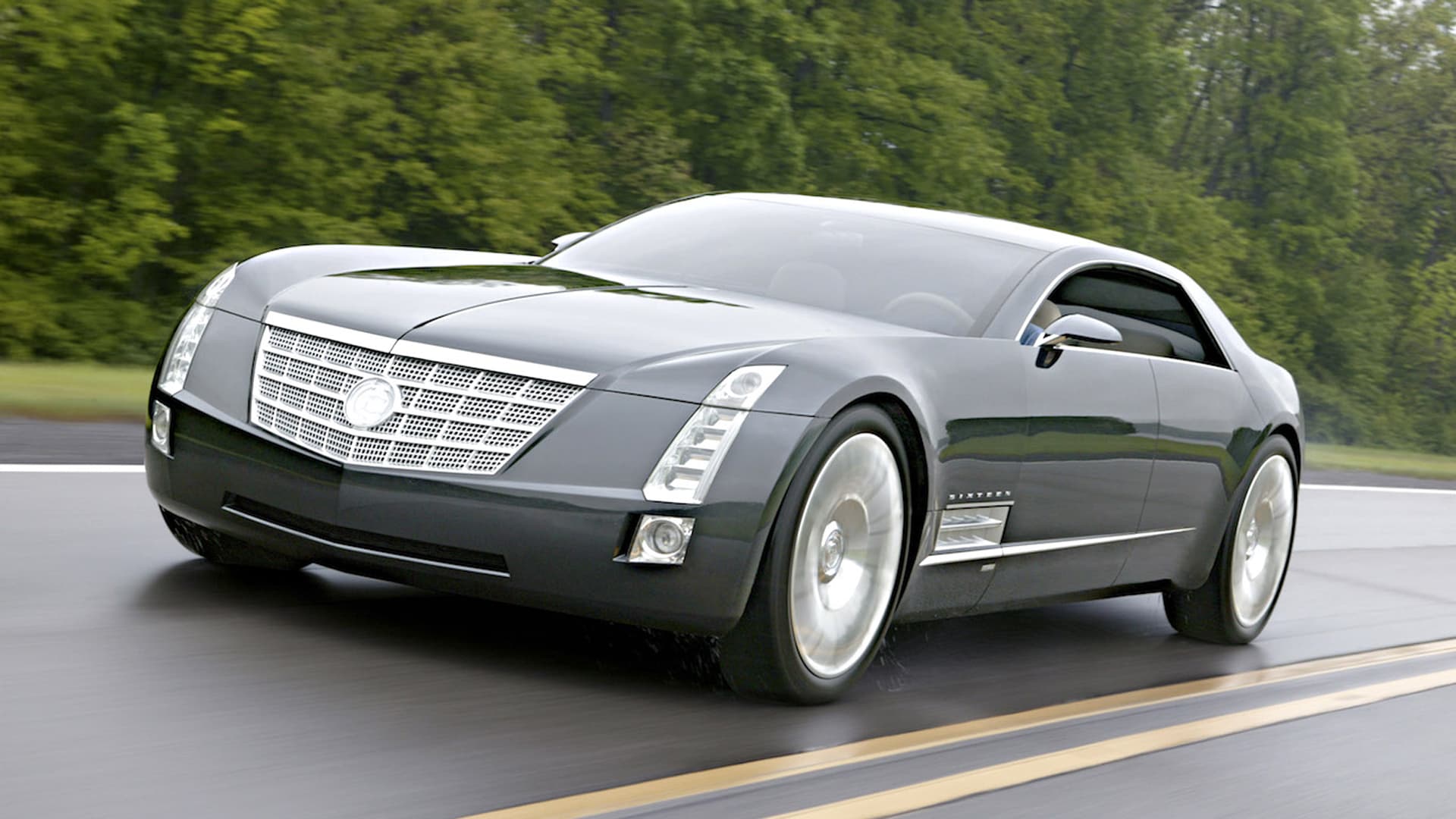
2003 Cadillac Sixteen Concept – 13.6-l V16
© CadillacWe have bent the rules a little with the 1,000hp 13.6-liter Sixteen concept car. But, in our defence, Cadillac did produce a working version that was featured on the Top Gear TV show, and also in the Click and Real Steel films.
In addition, Cadillac also built regular production V16-powered cars in the 1930s, even if they made do with a displacement of just 7.4 liters. The Sixteen featured ‘displacement-on-demand’ technology, allowing it to run on twelve or eight cylinders to save fuel.